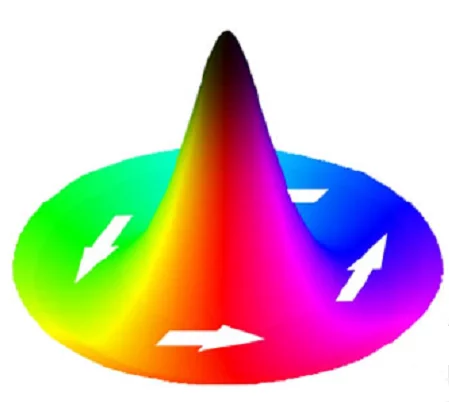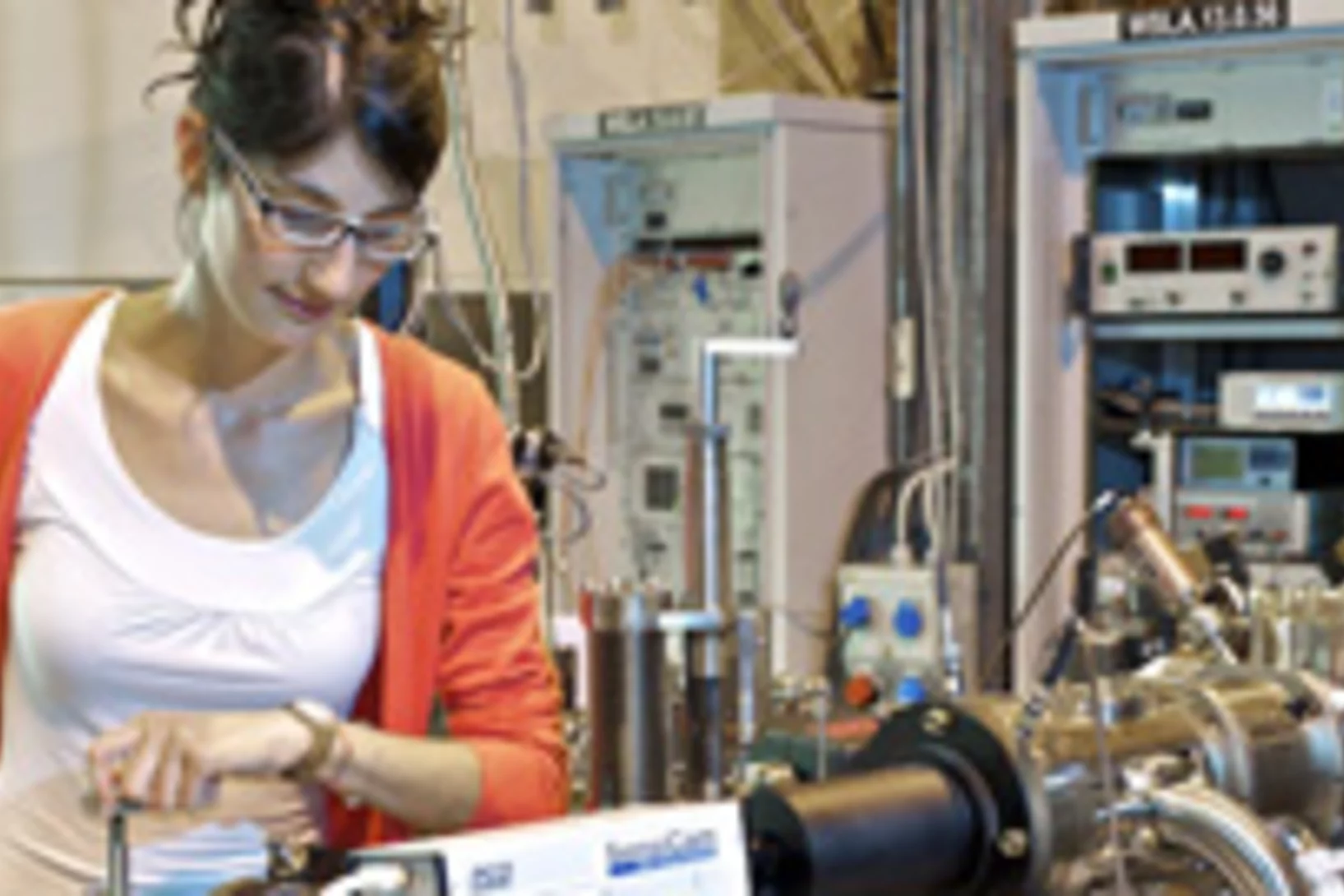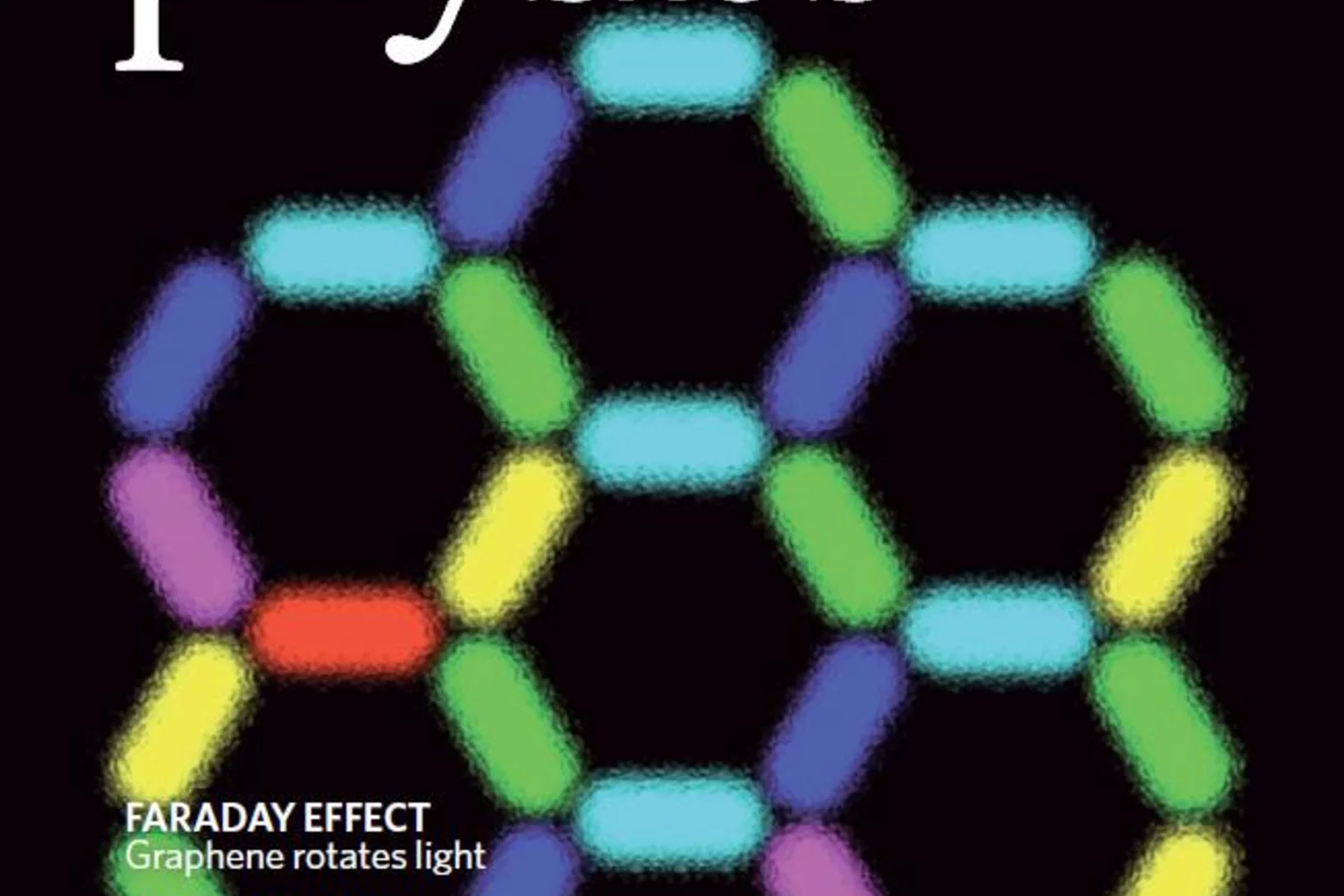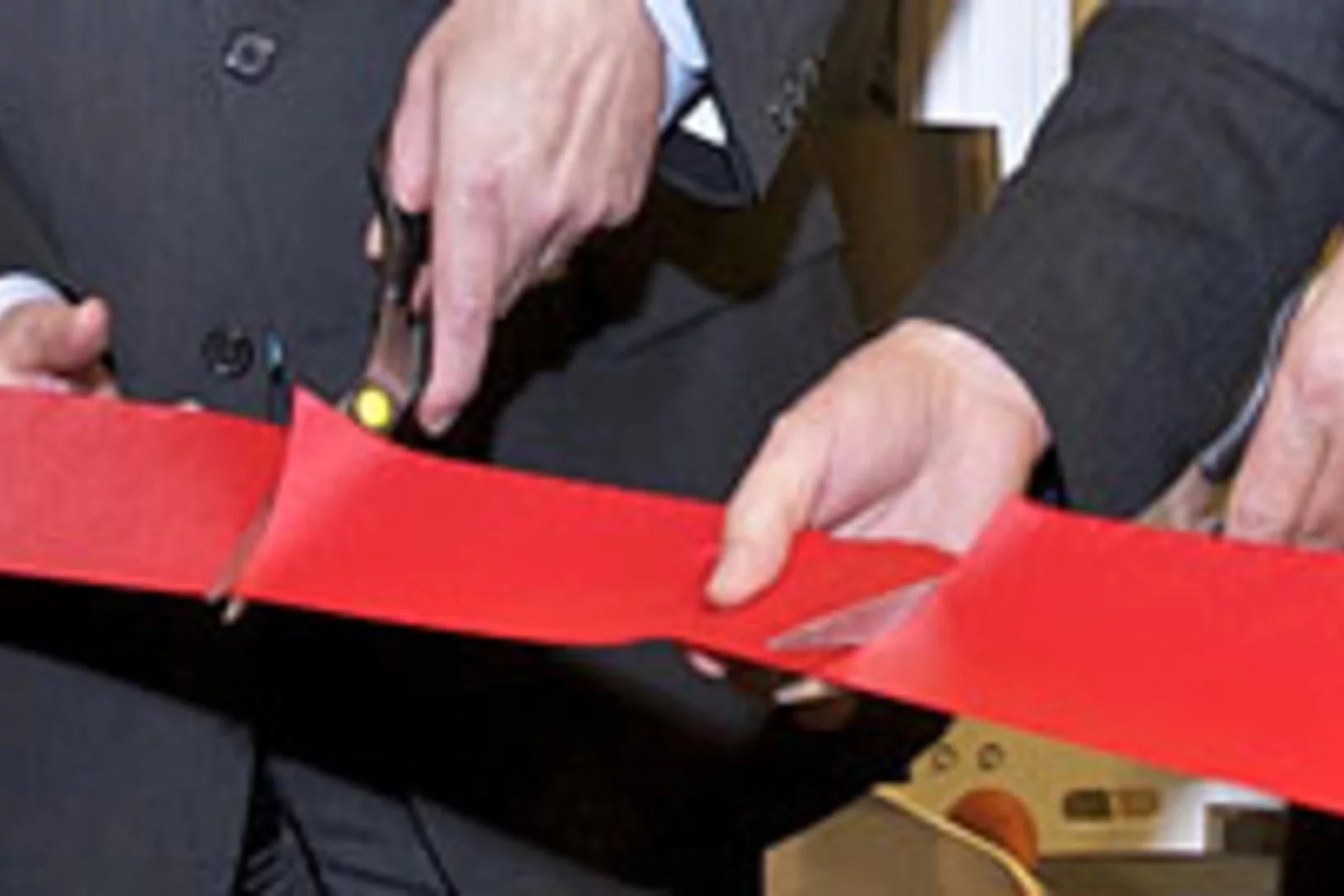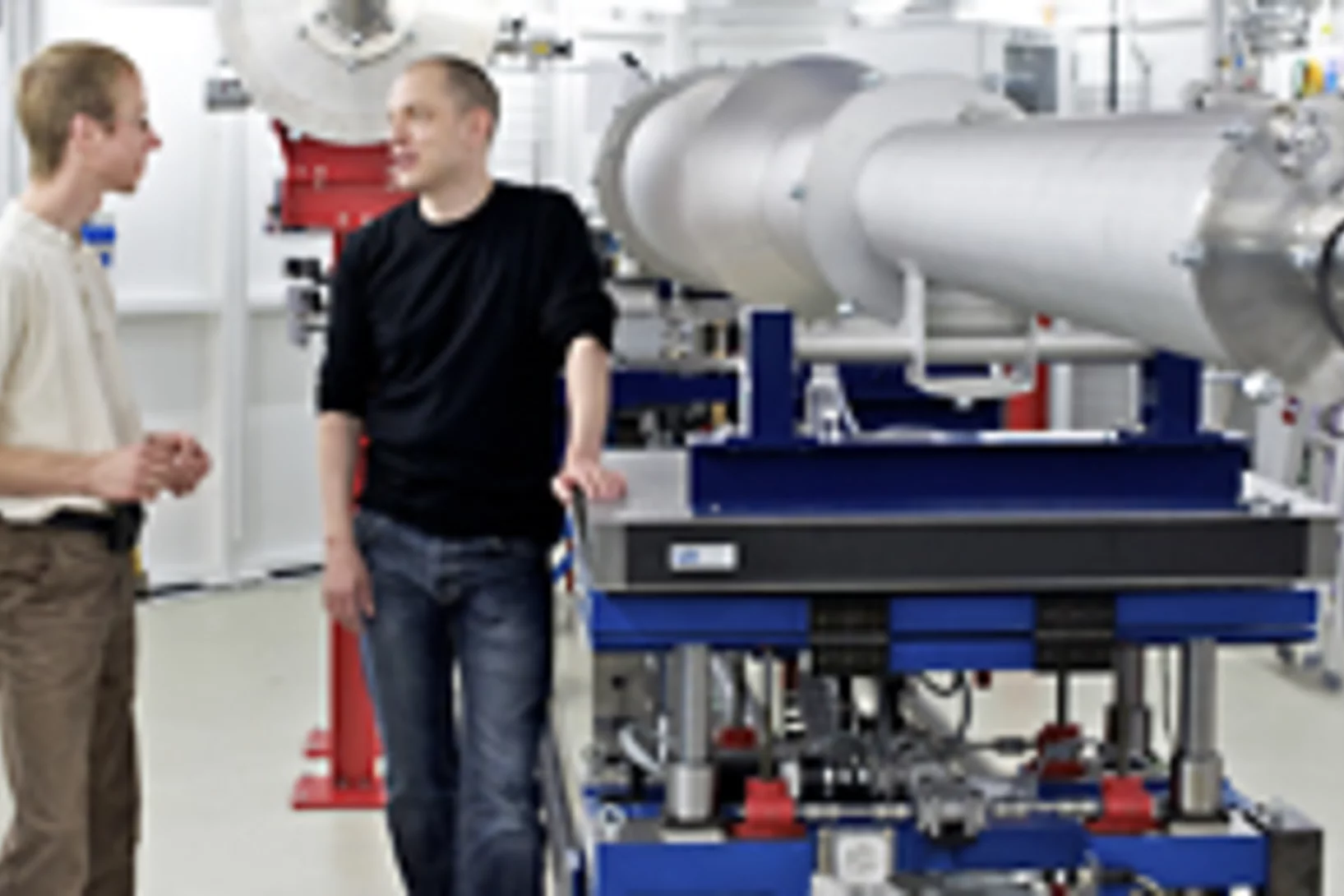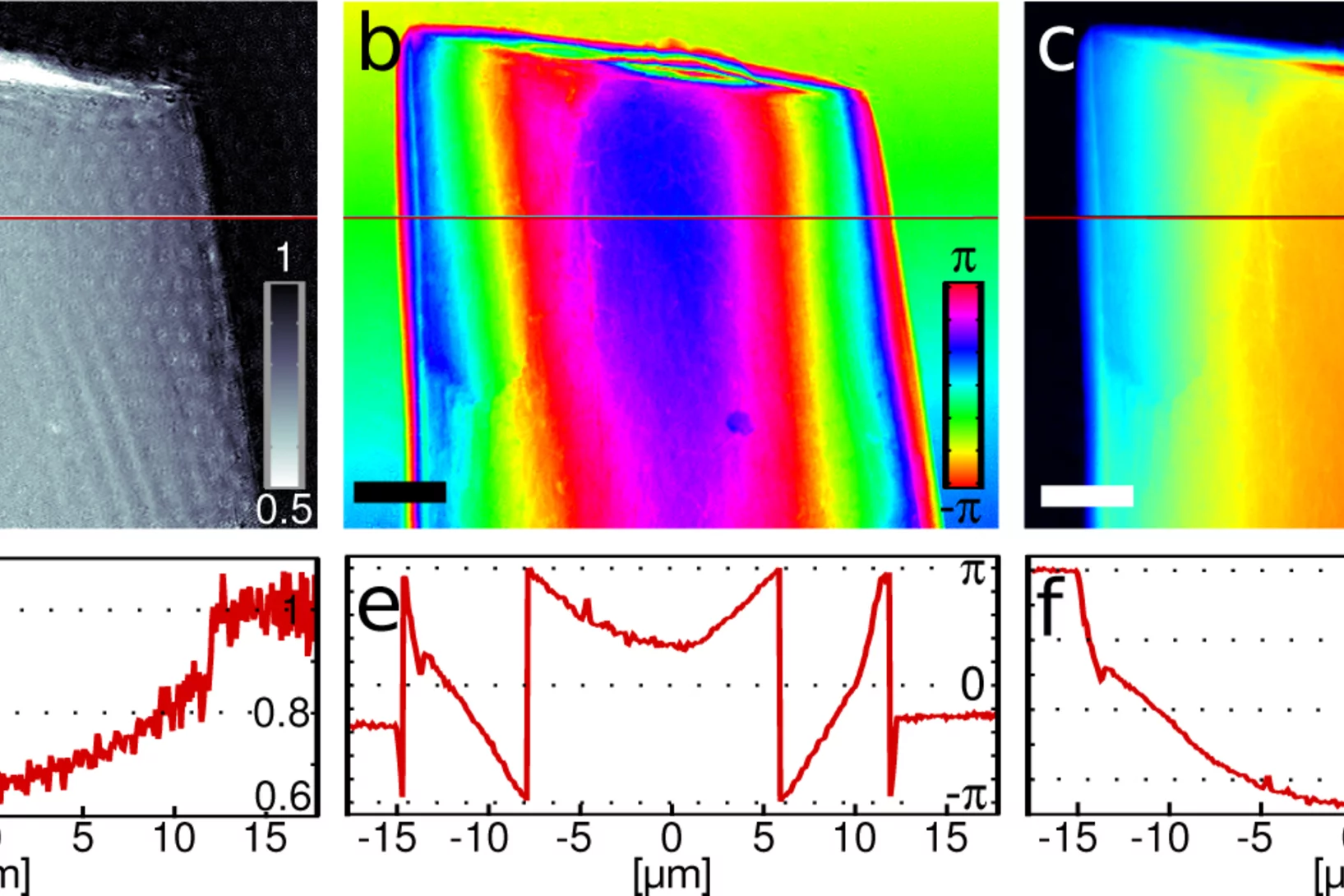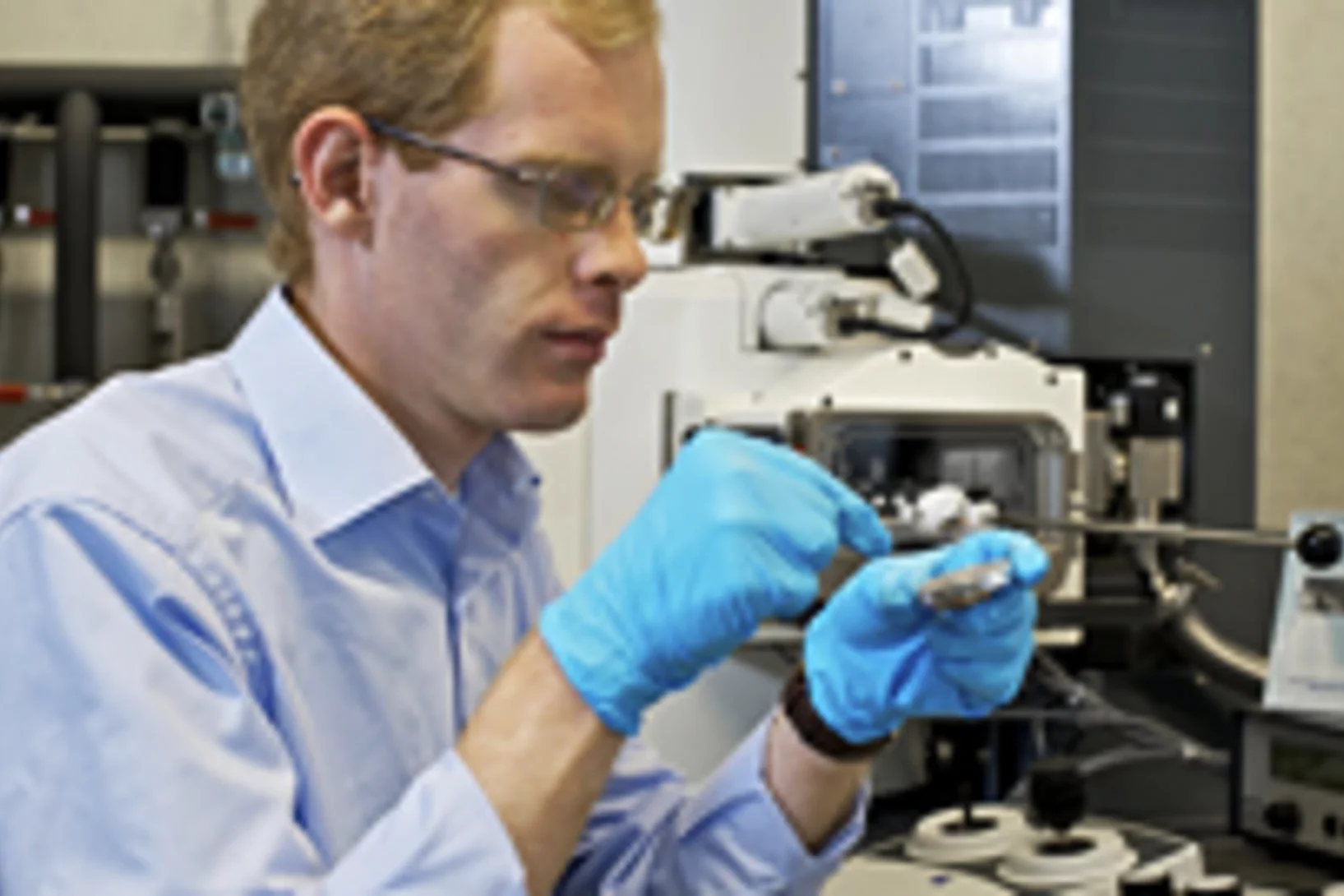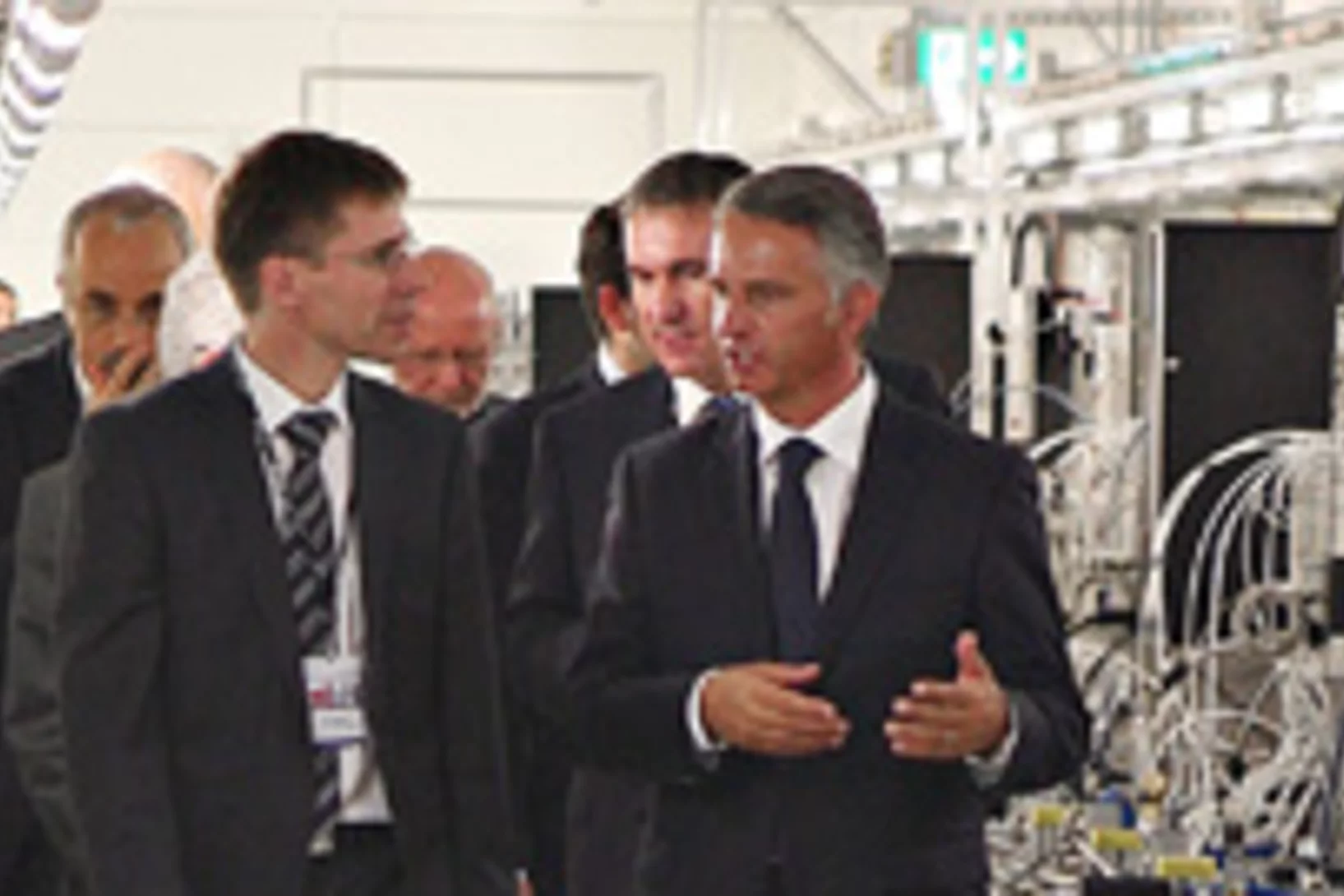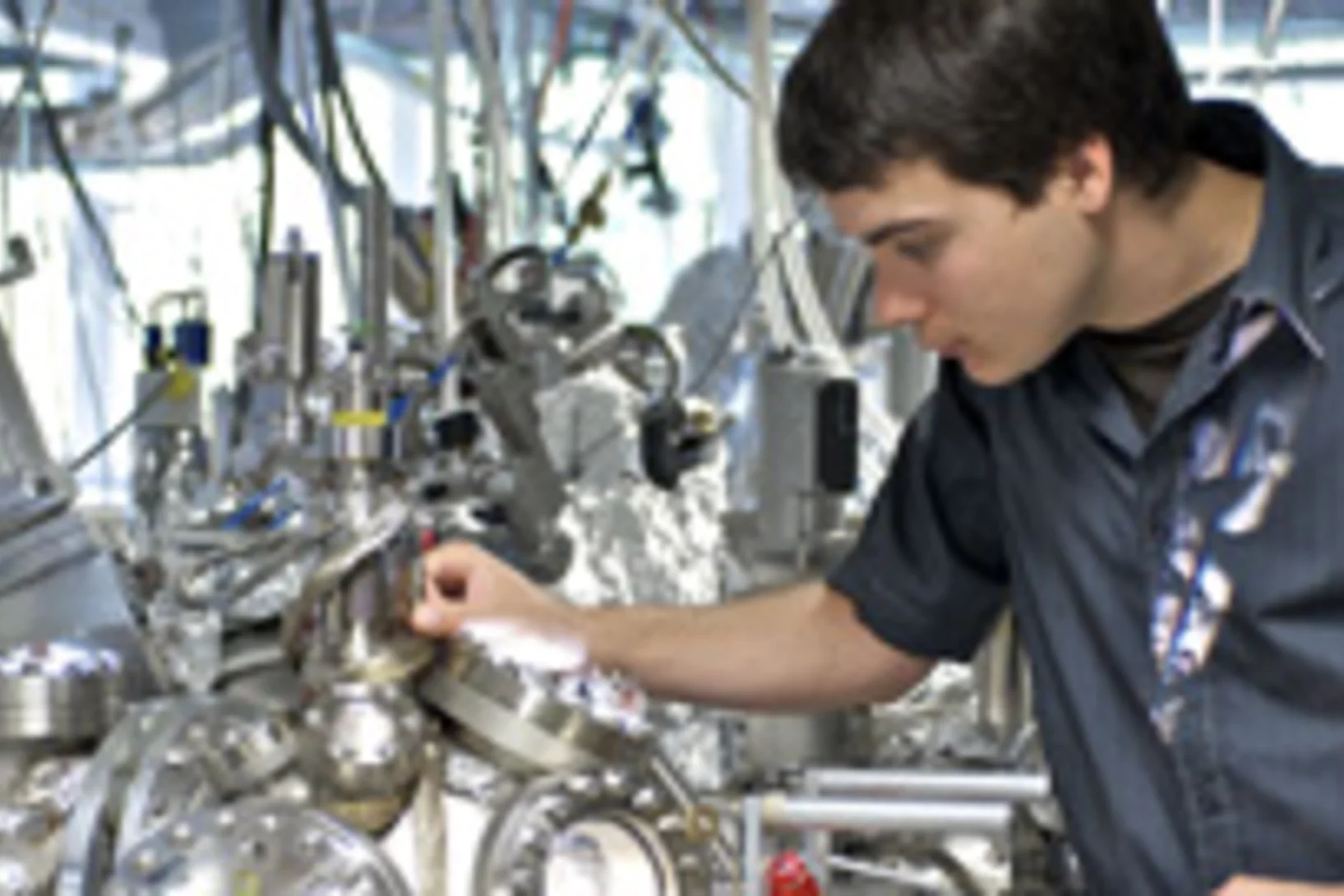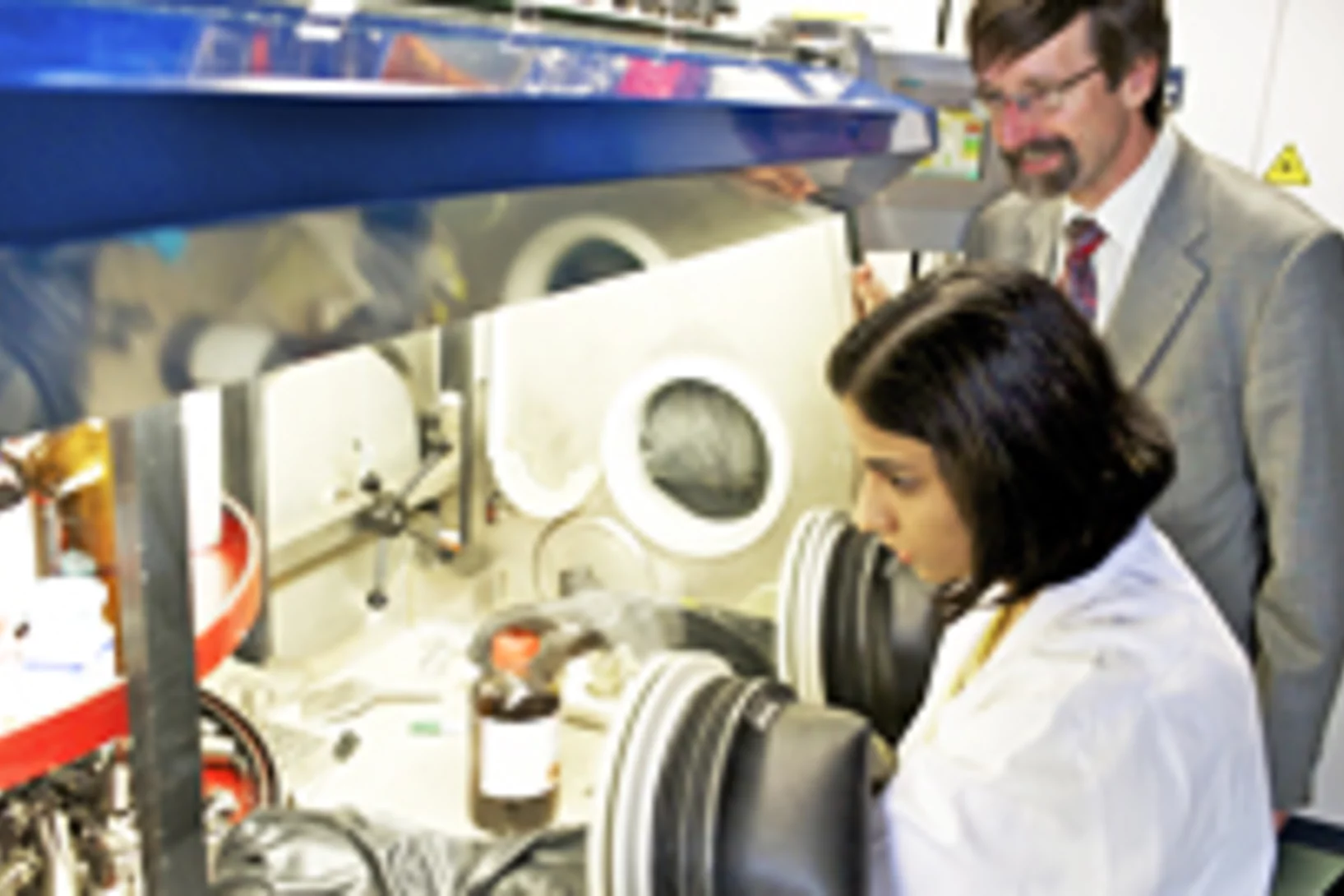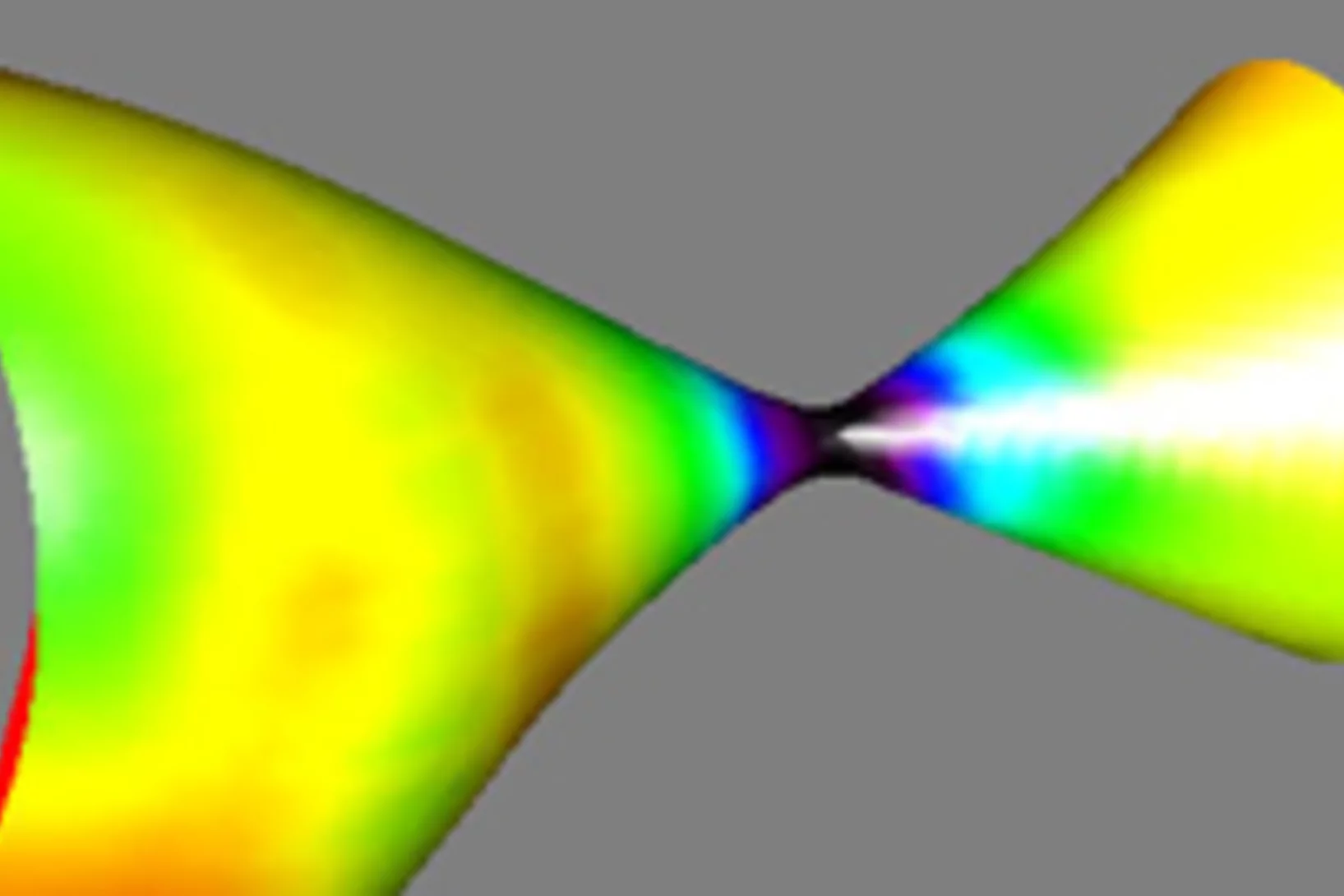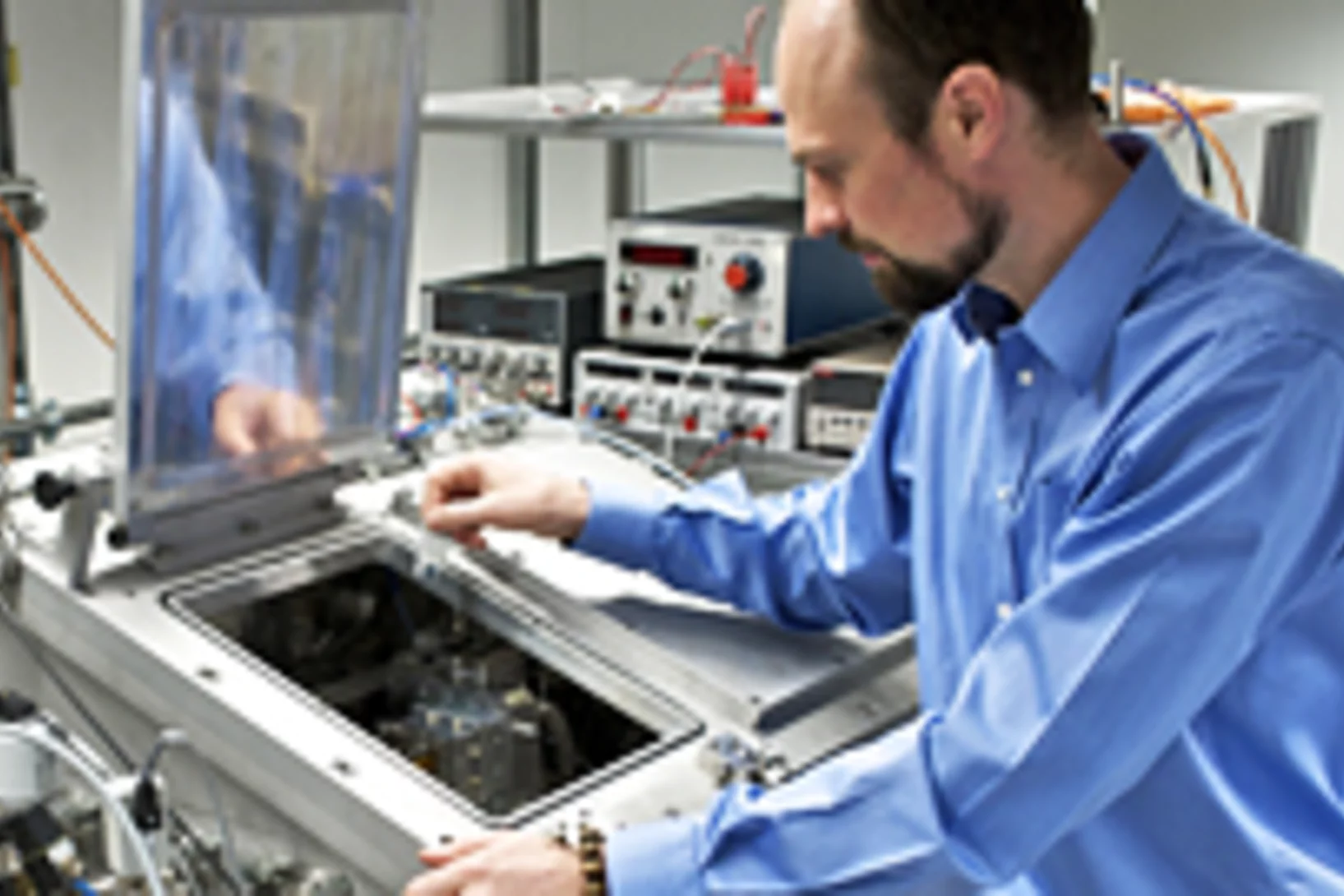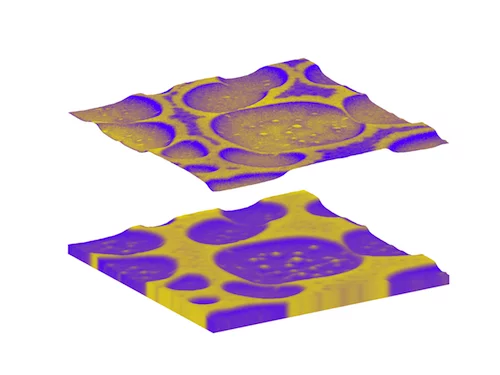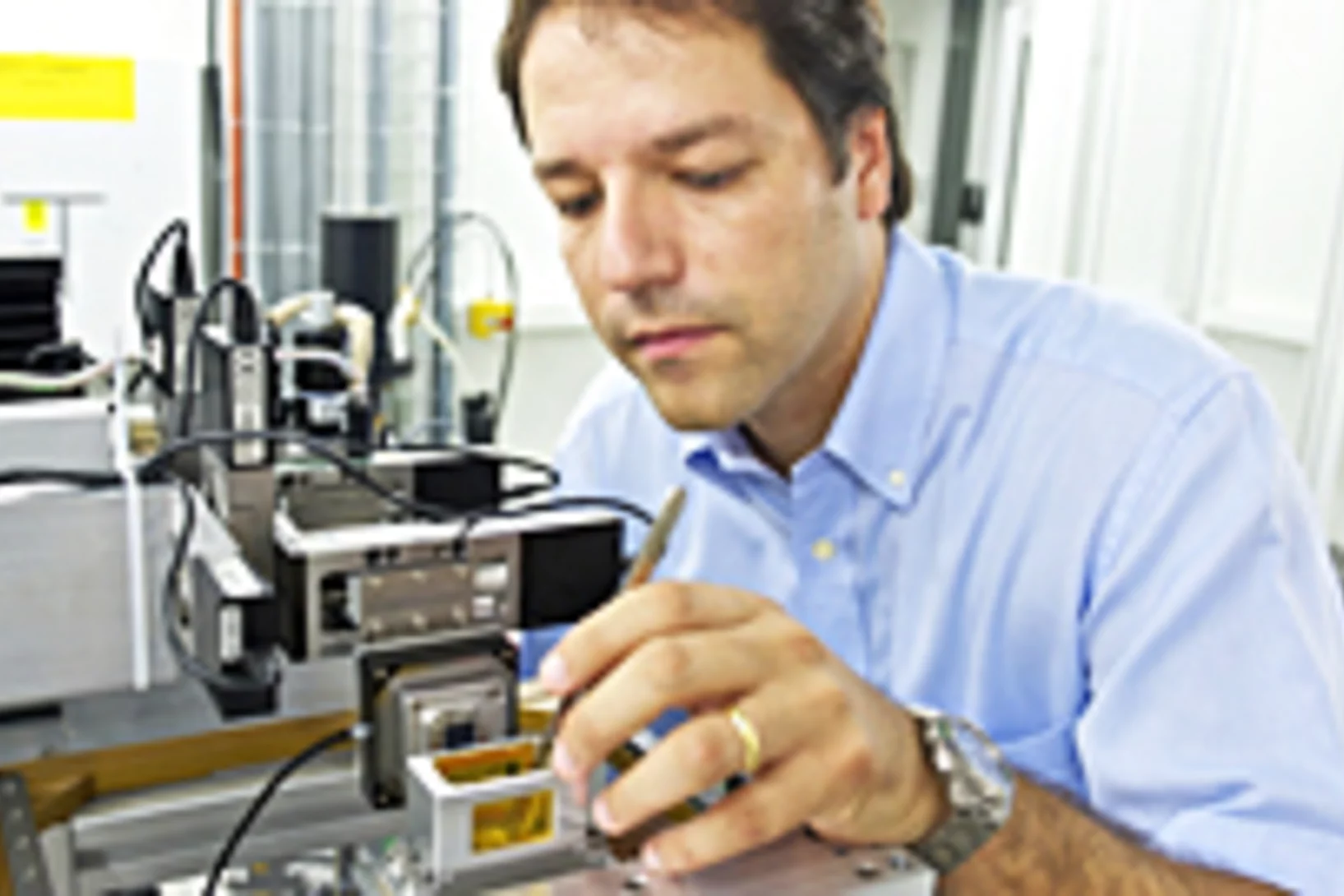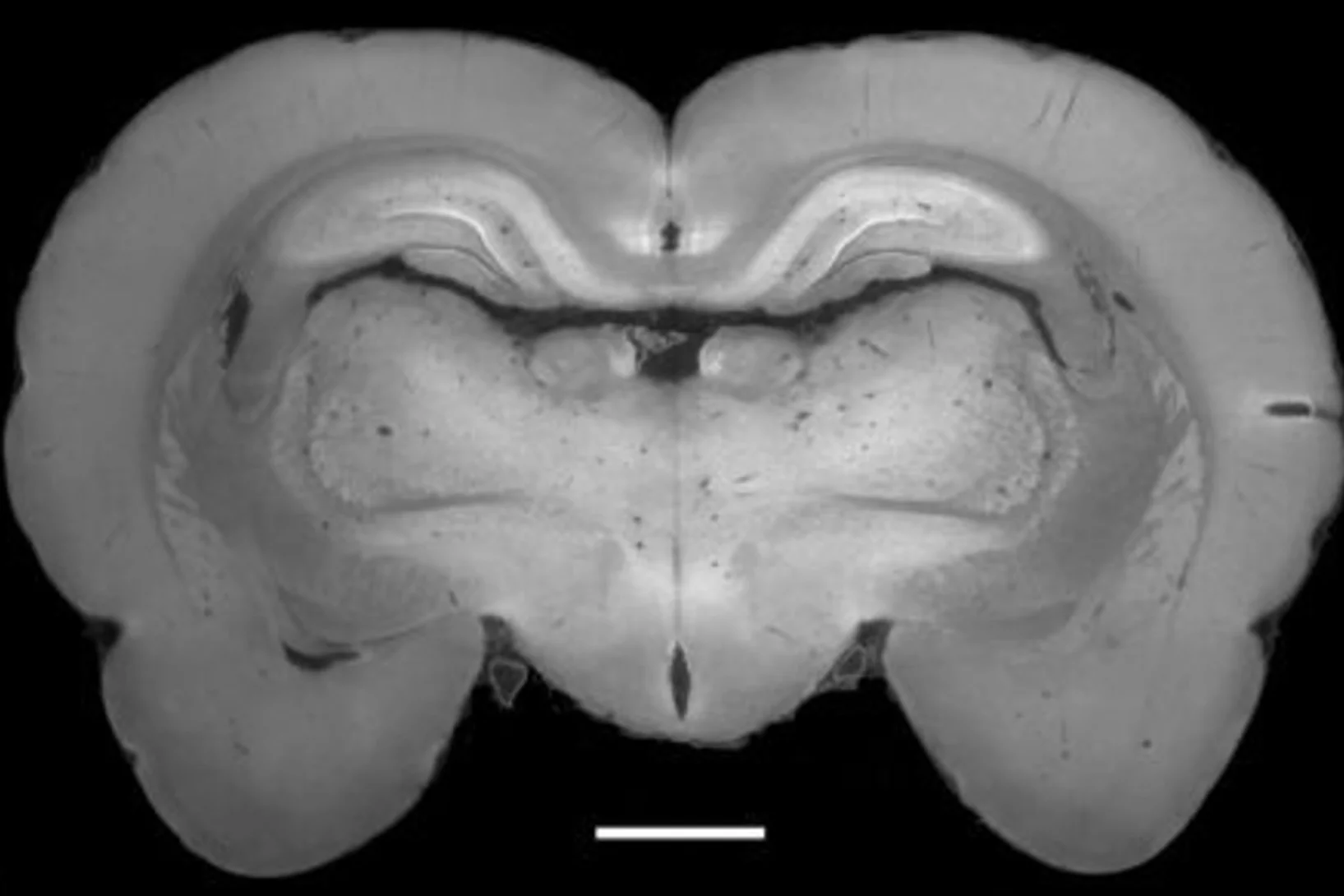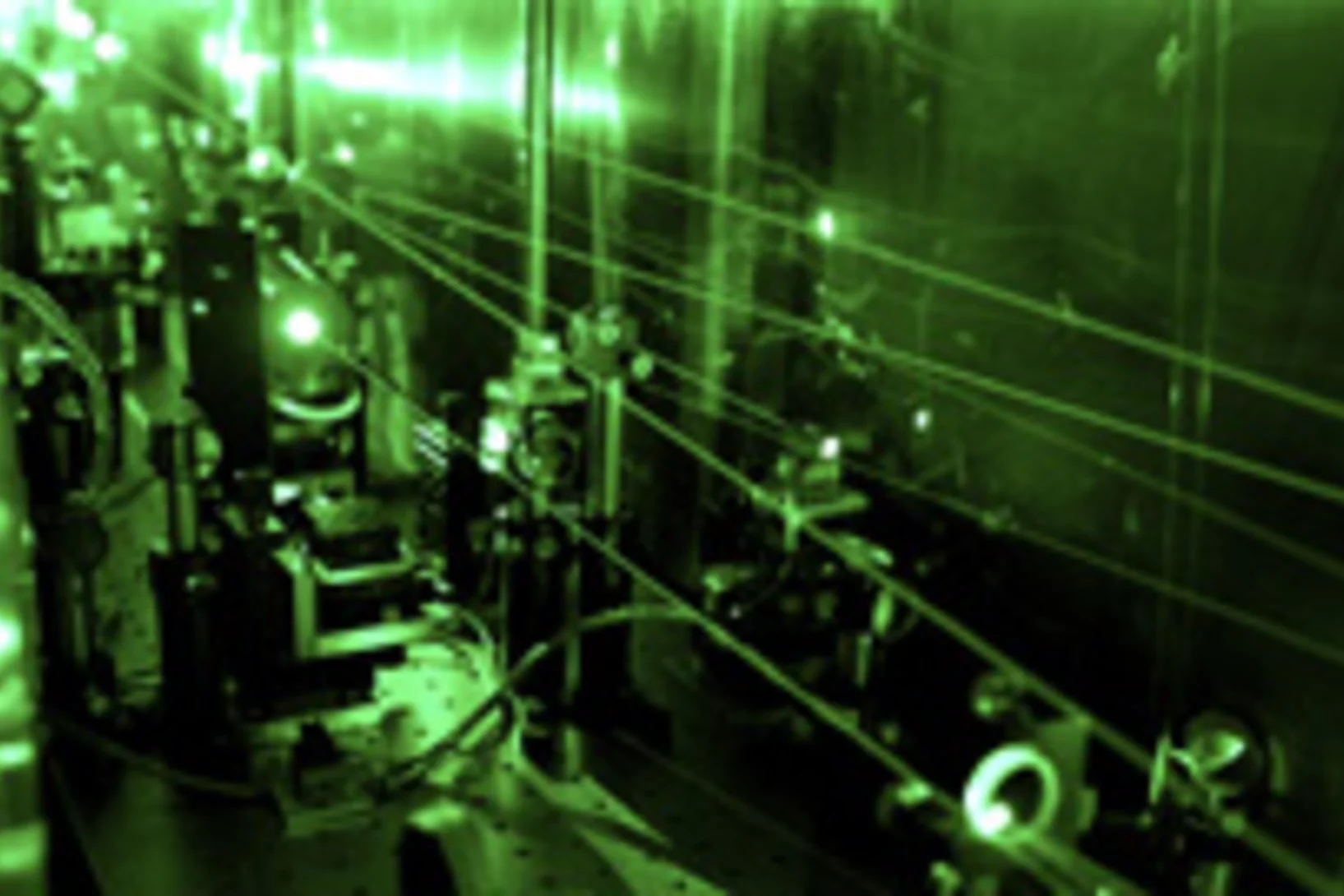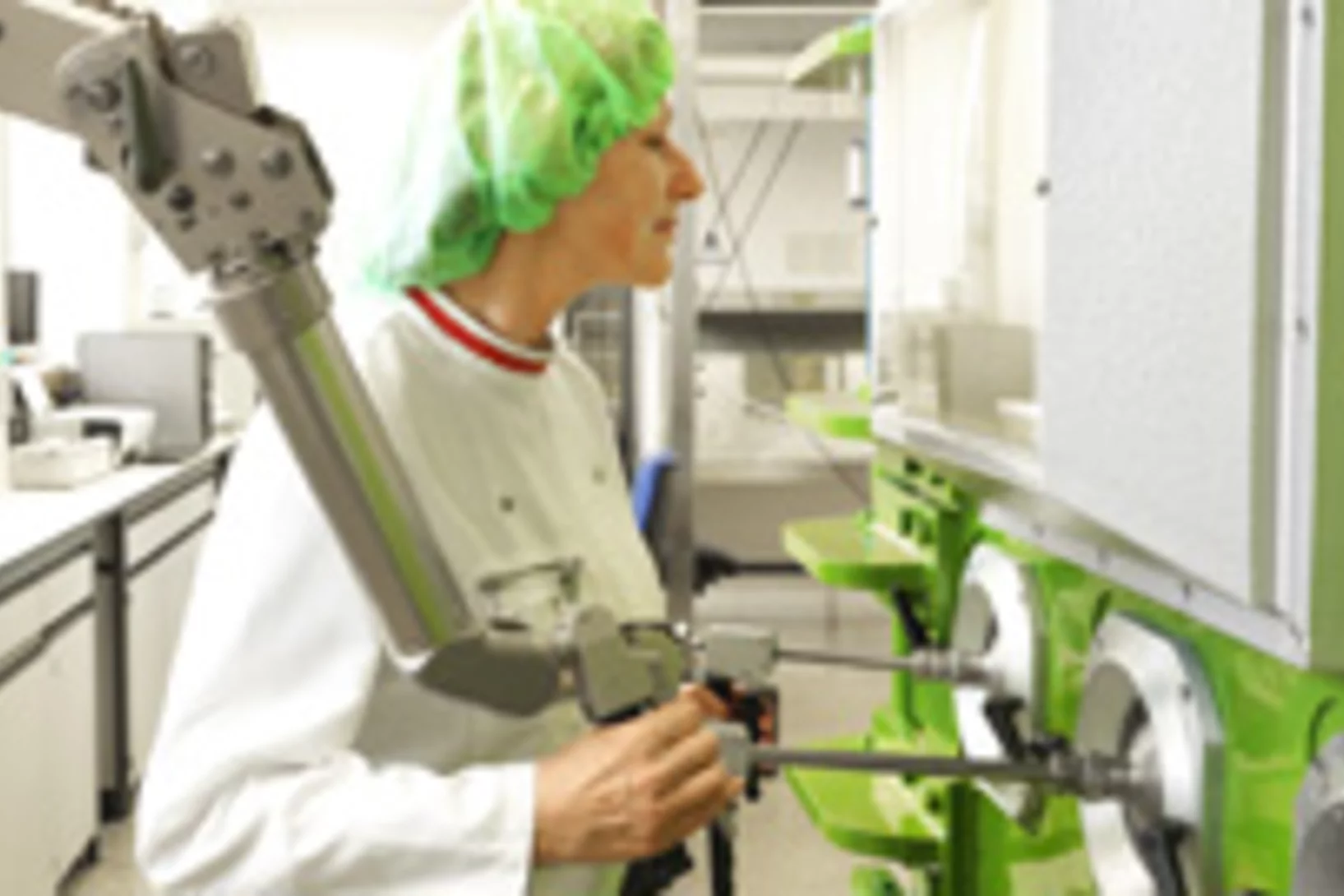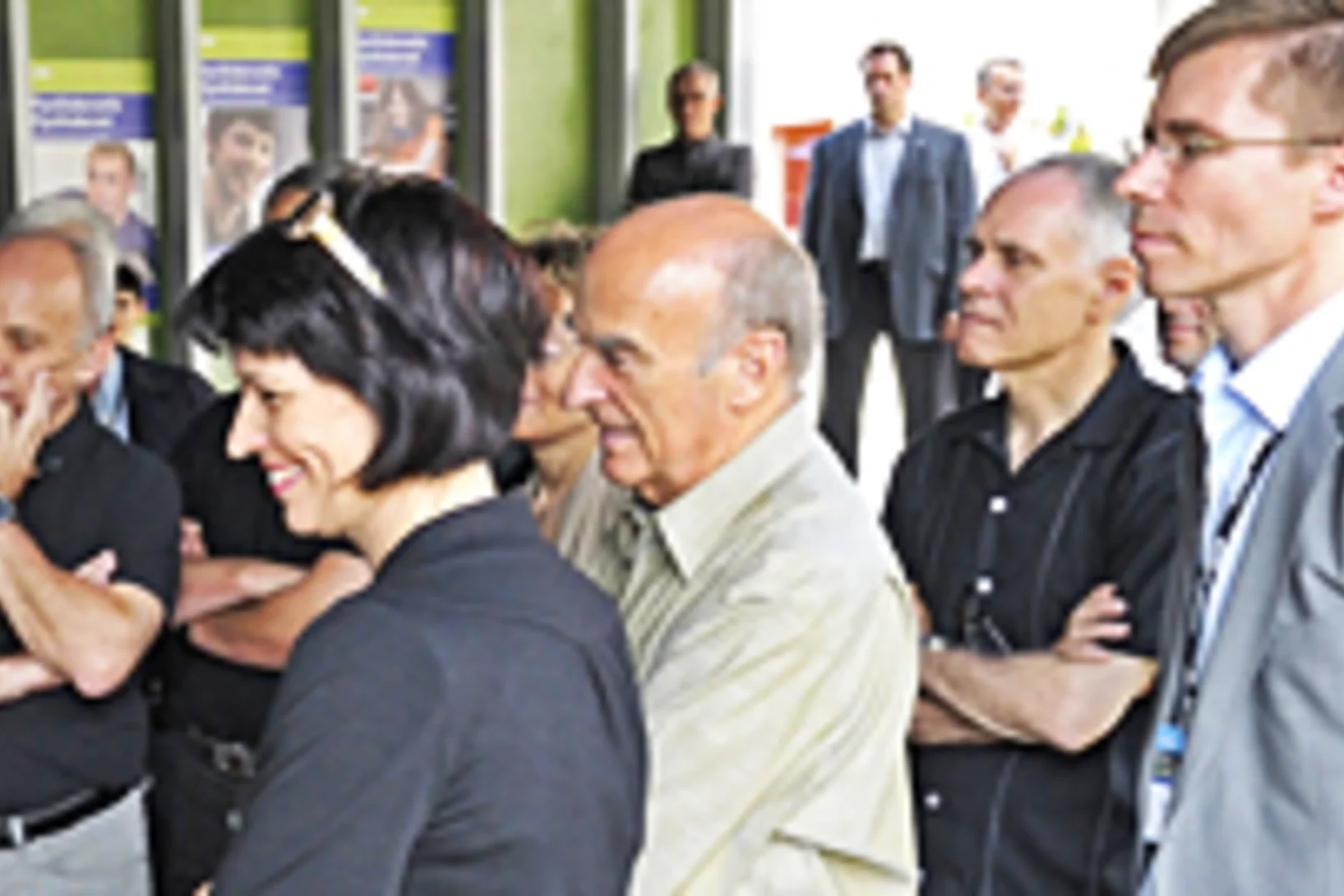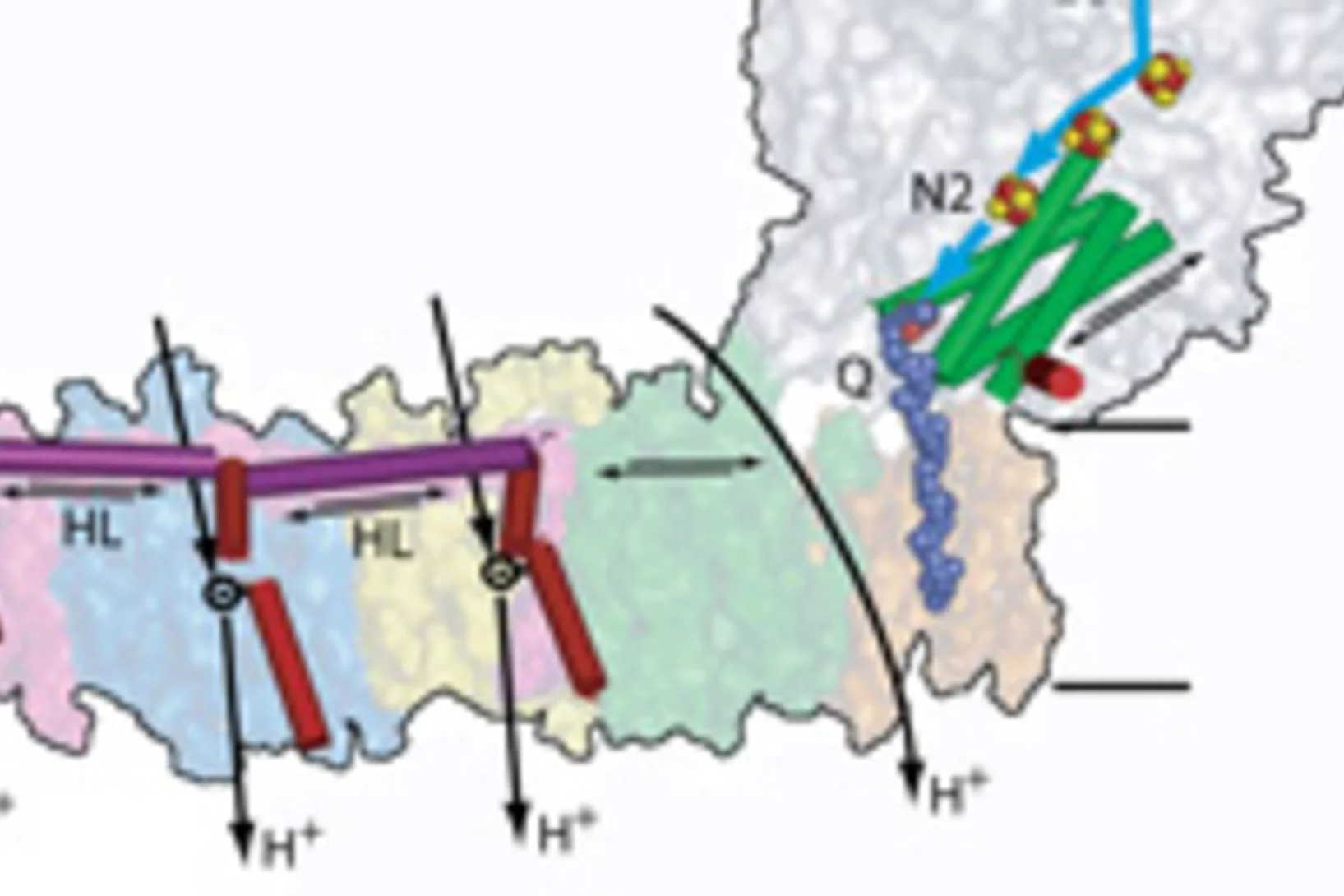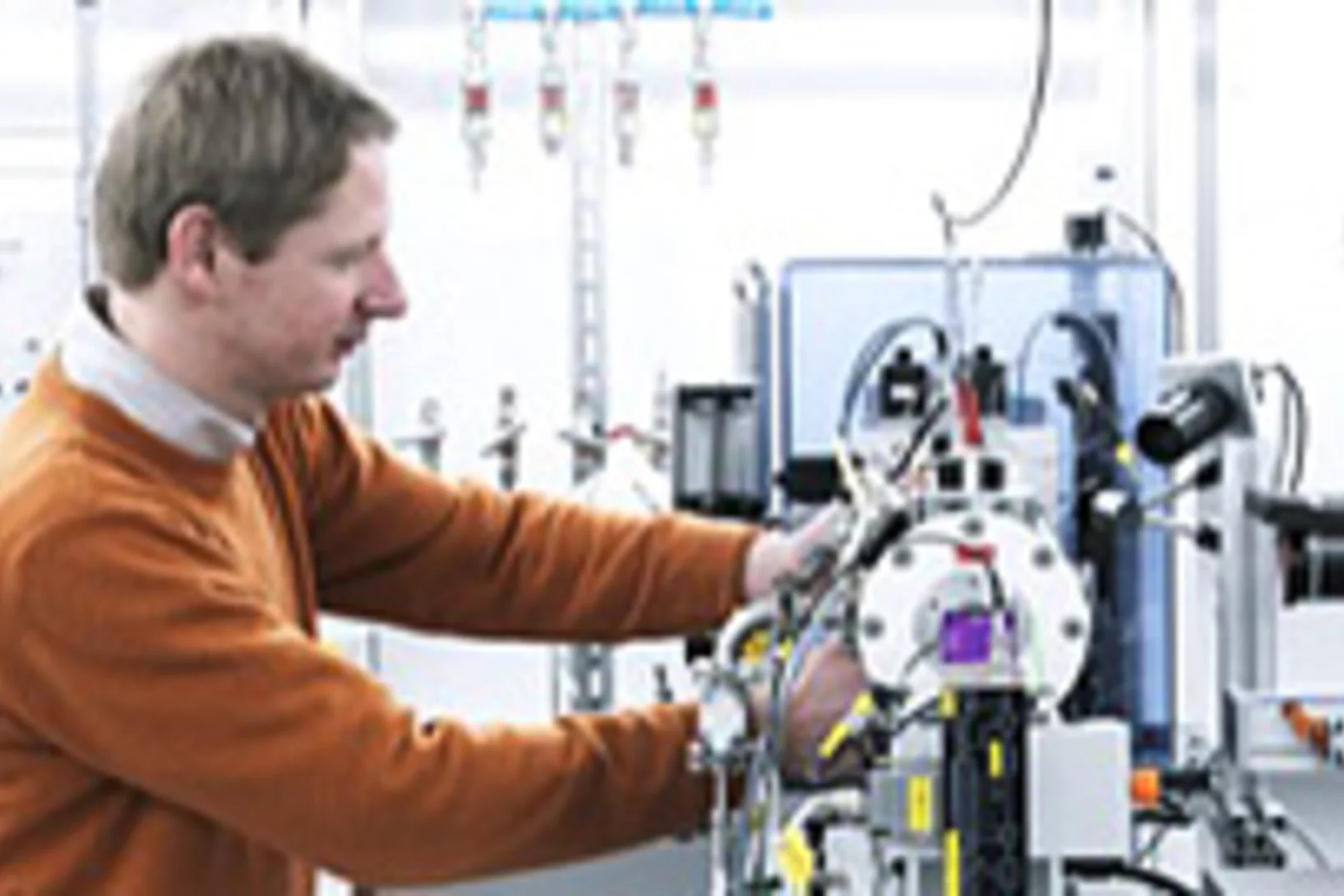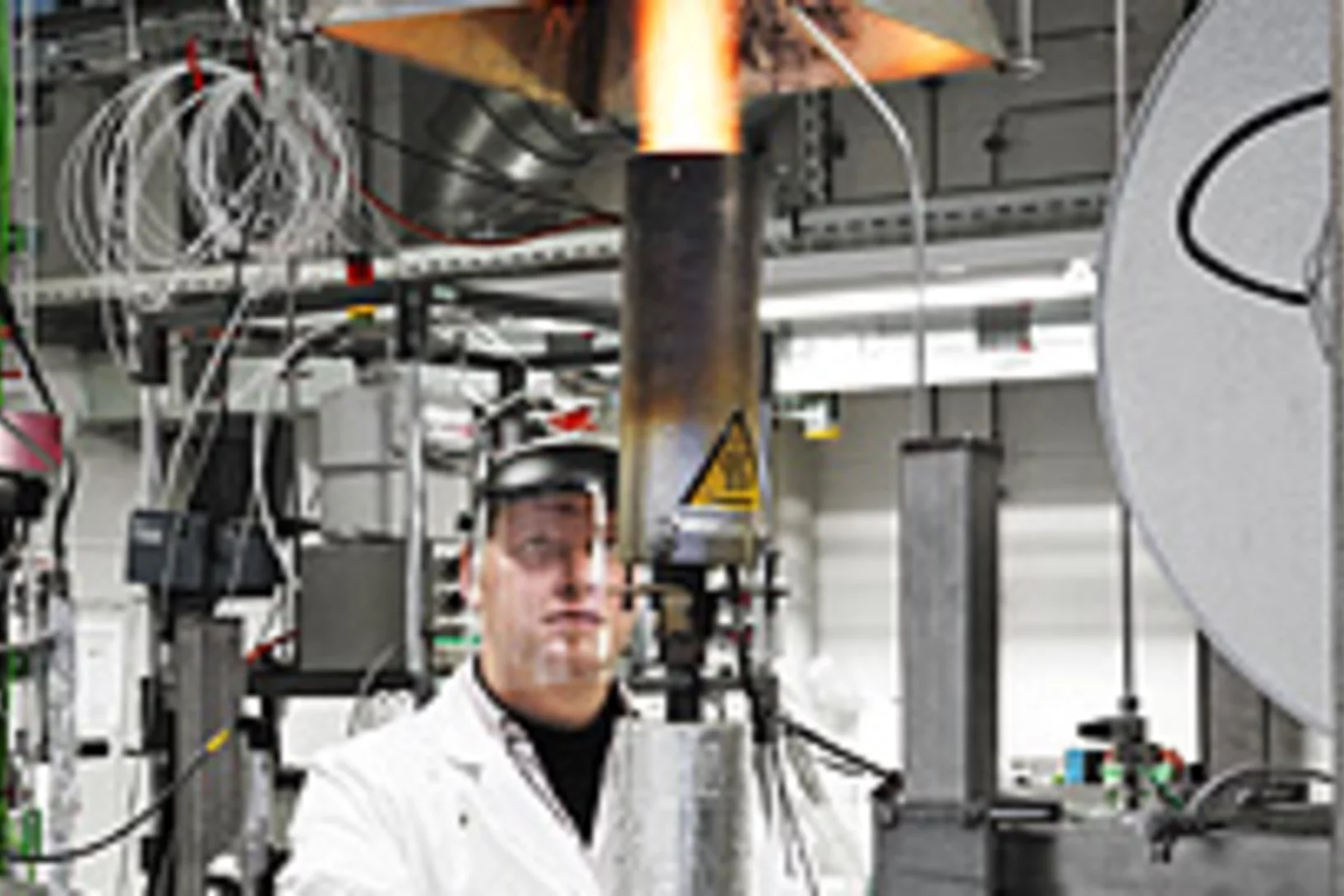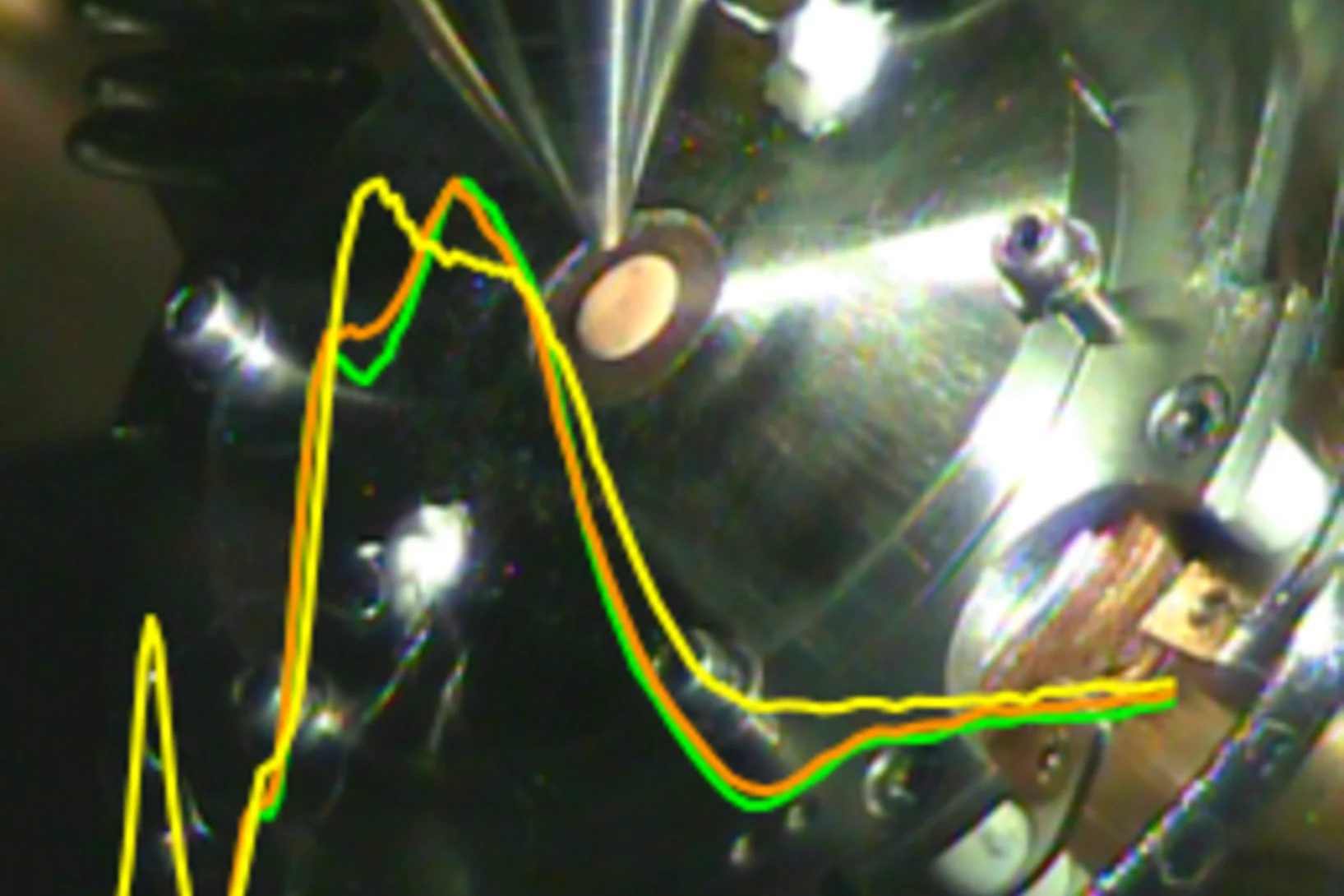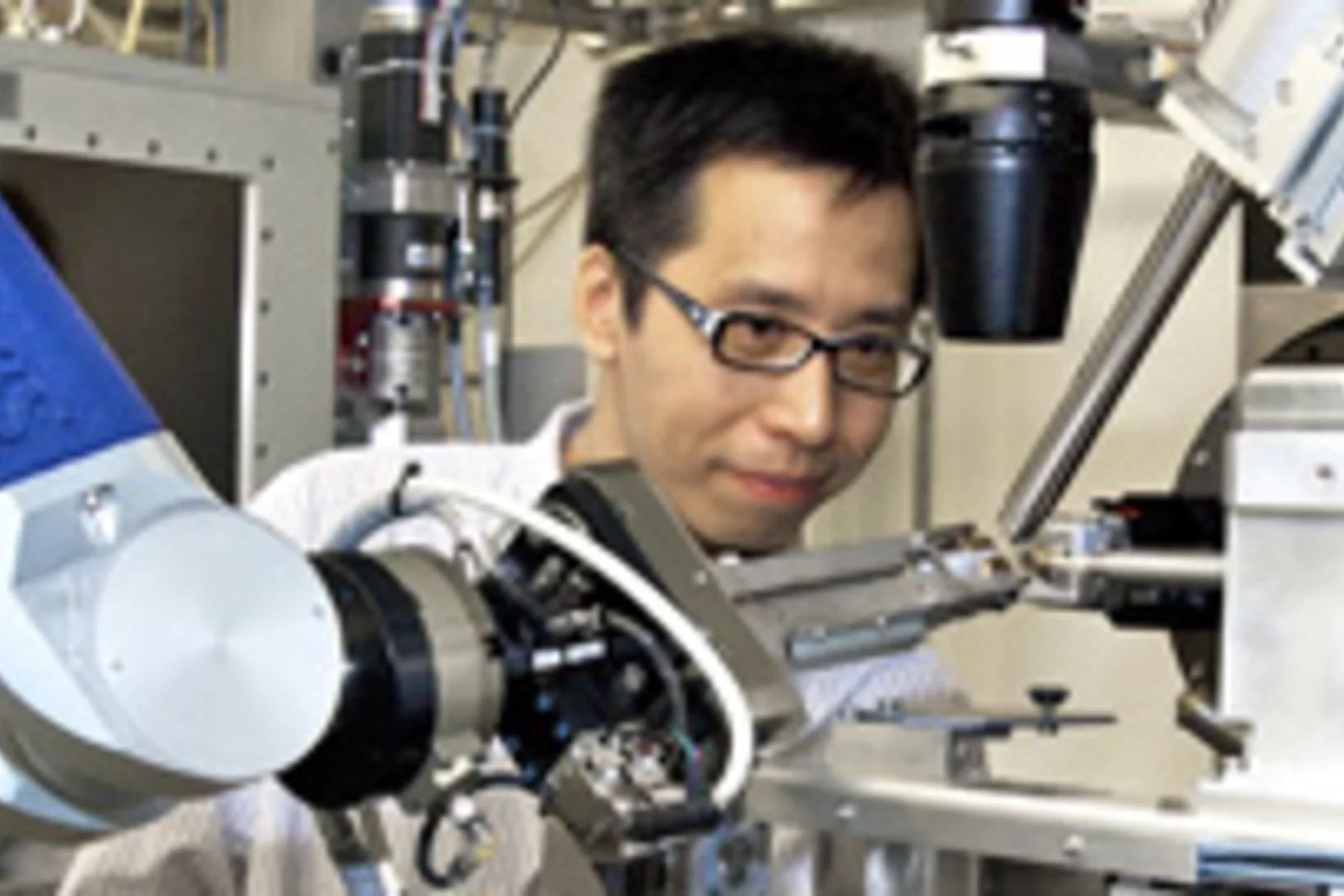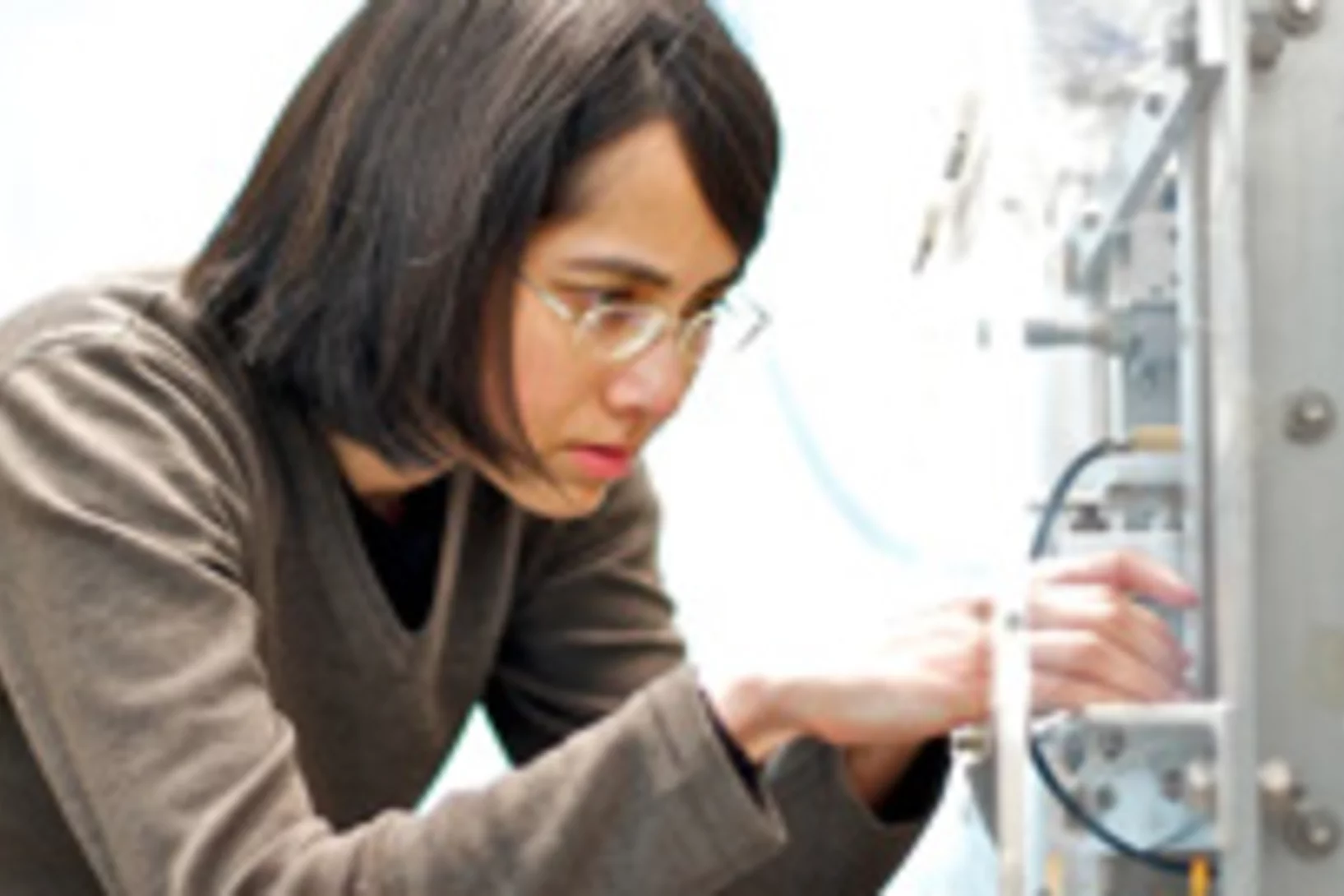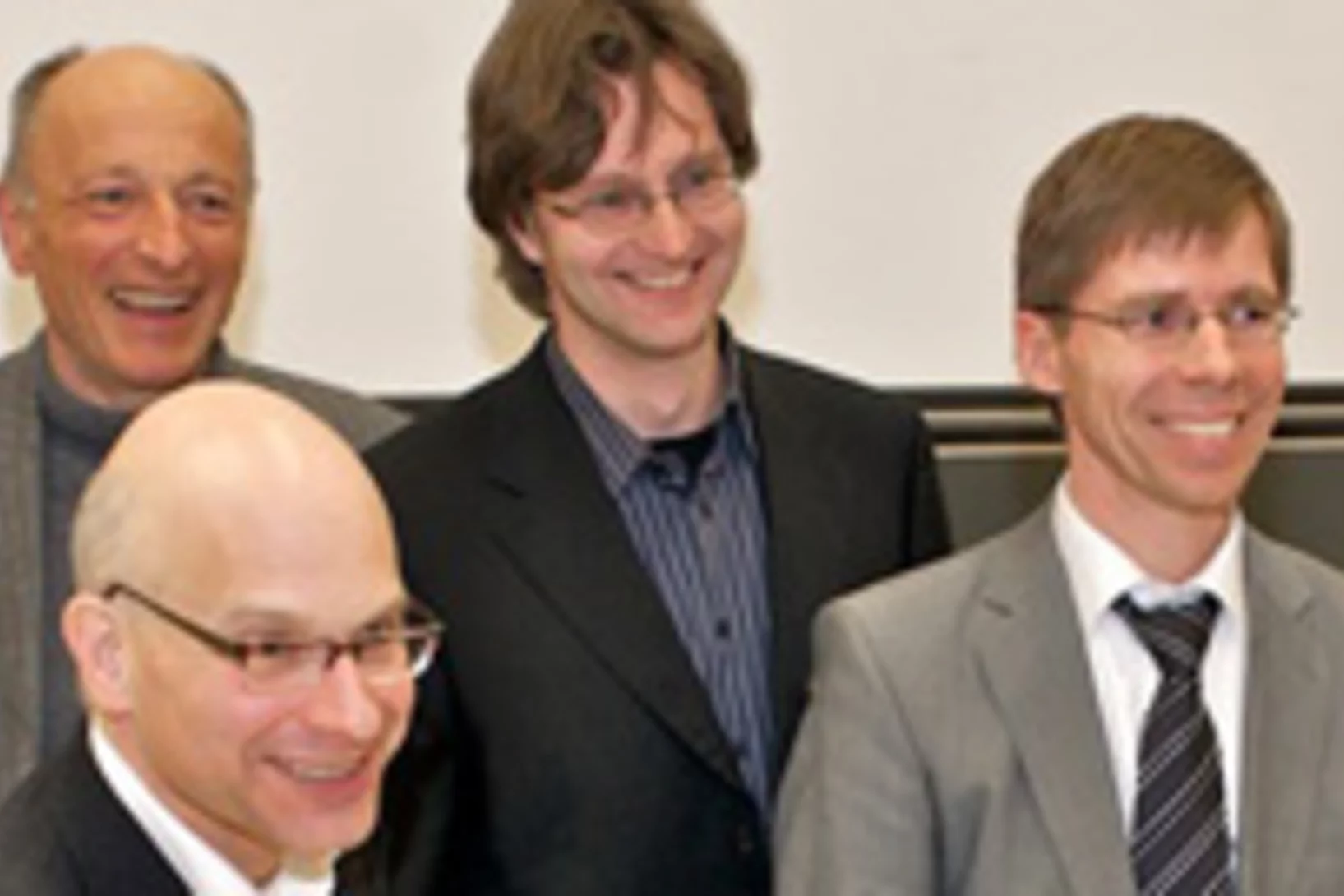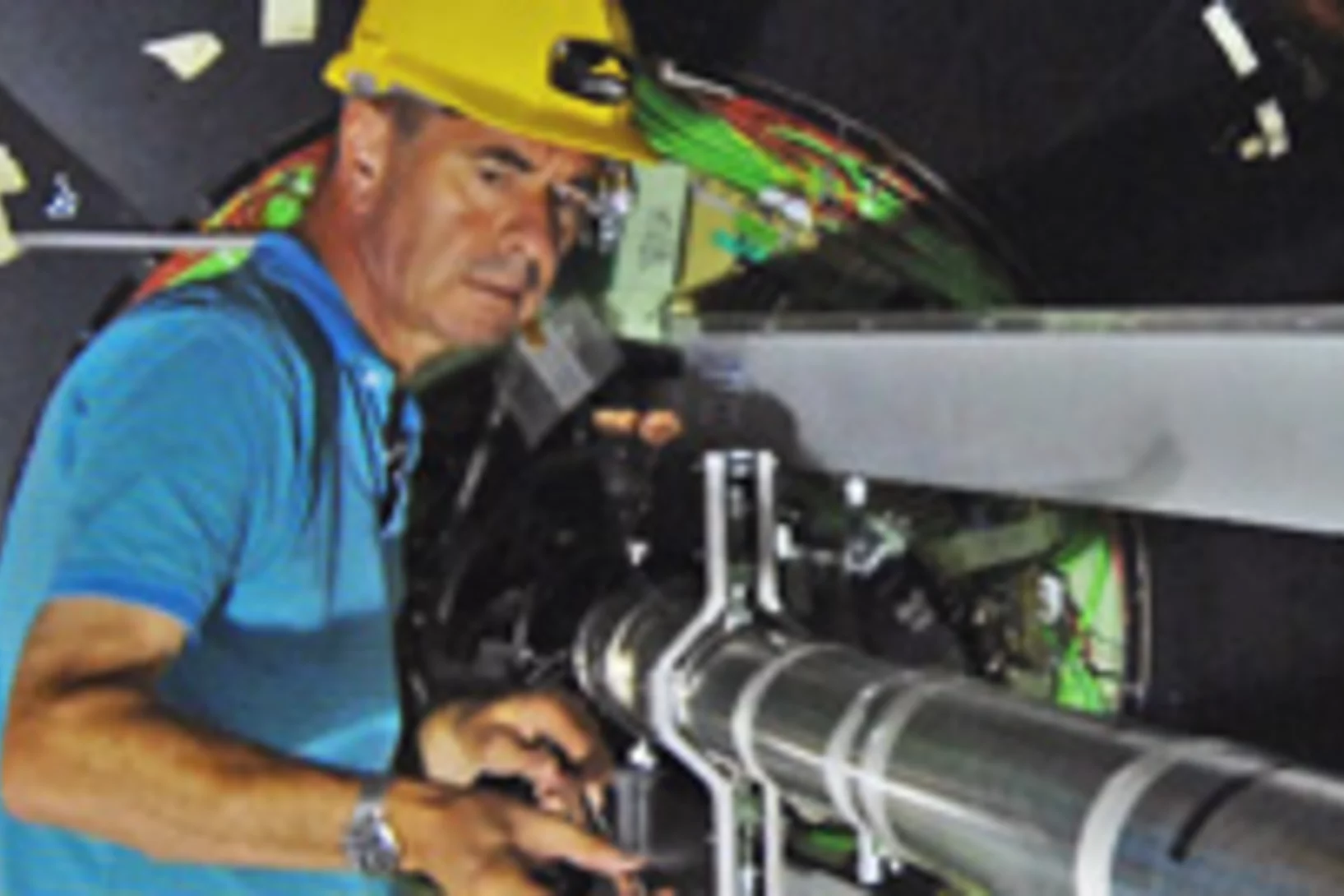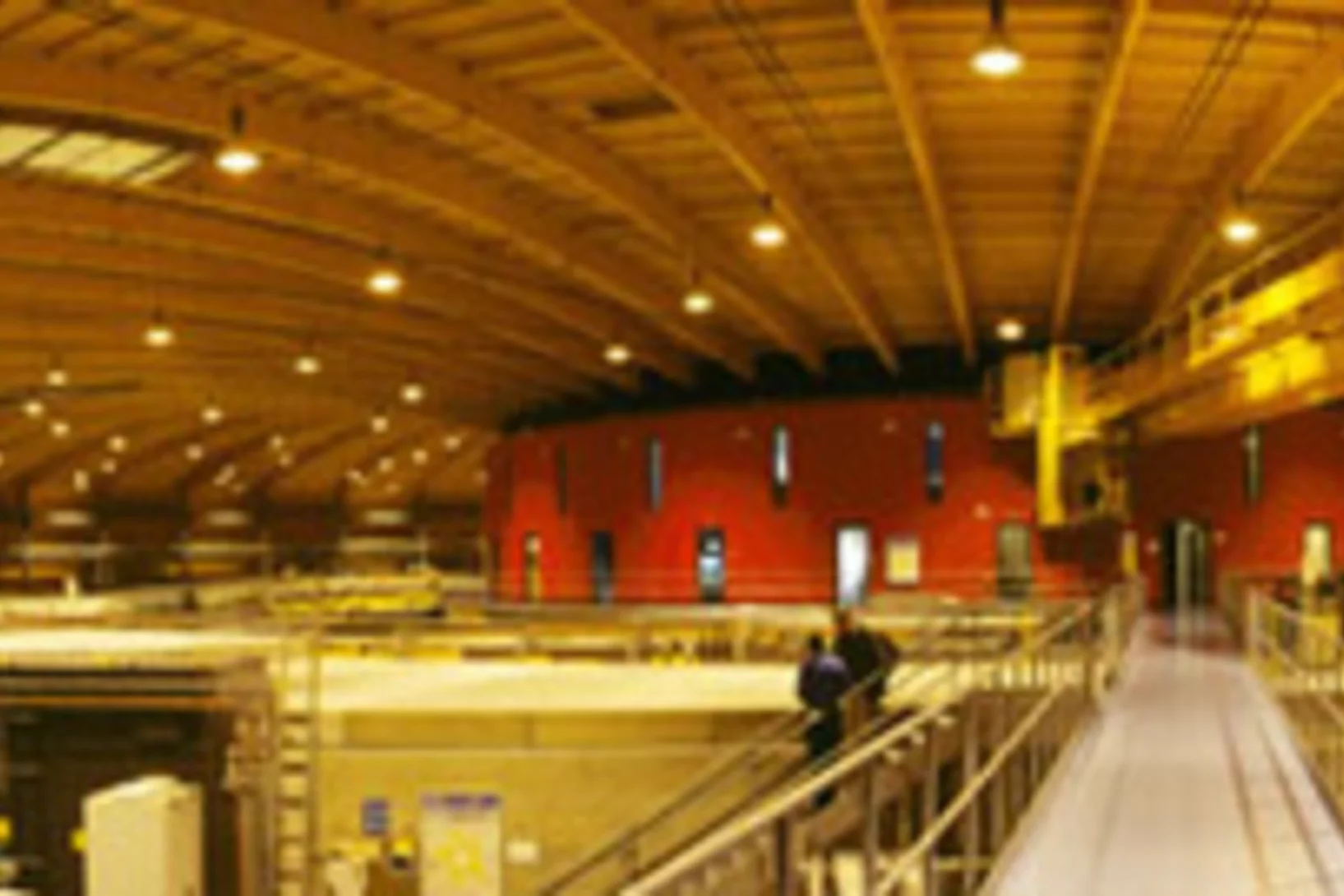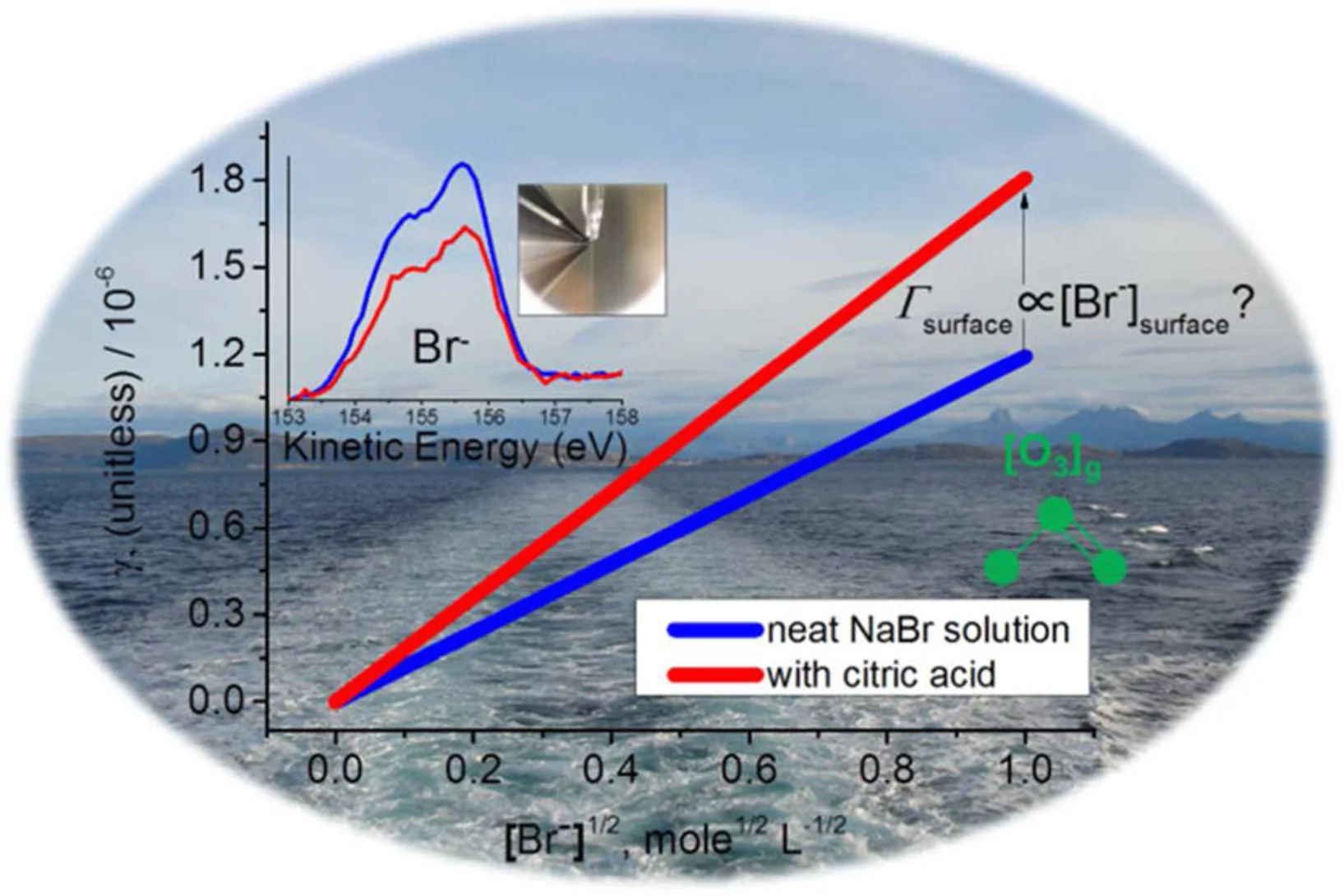Direct Determination of Large Spin-Torque Nonadiabaticity in Vortex Core Dynamics
We use a pump-probe photoemission electron microscopy technique to image the displacement of
vortex cores in Permalloy discs due to the spin-torque effect during current pulse injection. Exploiting the
distinctly different symmetries of the spin torques and the Oersted-field torque with respect to the vortex
spin structure we determine the torques unambiguously, and we quantify the amplitude of the strongly
Les monopôles magnétiques en mouvement
Depuis des décennies, les scientifiques mènent des recherches sur les monopôles magnétiques, c’est-à-dire des charges magnétiques distinctes qui pourraient se déplacer de manière isolée à la manière de charges électriques. Une équipe de chercheurs de l’Institut Paul Scherrer et de l’University College de Dublin est parvenue à créer des monopôles sous la forme de quasi-particules dans une disposition d’aimants de la taille du nanomètre et à observer directement leur mouvement.
Moving Monopoles Caught on Camera - researchers make visible the movement of monopoles in an assembly of nanomagnets
For decades, researchers have been searching for magnetic monopoles; isolated magnetic charges, which can move around freely in the same way as electrical charges – since magnetic poles normally only occur in pairs.
25 Jahre erfolgreiche Behandlung von Augentumoren am PSI
Heute haben die Physiker und Ärzte des PSI diesen Erfolg mit einem Festsymposium gefeiert. In Anwesenheit von geladenen Gästen aus Forschung, Medizin und Politik wurde dabei auch die brandneue Behandlungsanlage OPTIS 2 eingeweiht. Diese Bestrahlungseinrichtung befindet sich nicht nur technisch auf dem allerneusten Stand, sondern überzeugt auch durch ihre Patientenfreundlichkeit.Cette actualité n'existe qu'en allemand.
Fortschritt für die Knochen-Forschung
Hochauflösendes Verfahren zur Nano-Computertomographie entwickeltEin neuartiges Nano-Tomographie-Verfahren, das von einem Team der TU München, des Paul Scherrer Instituts (PSI) und der ETH Zürich entwickelt wurde, erlaubt erstmals computertomographische Untersuchungen feinster Strukturen mit einer Auflösung im Nanometerbereich. Mit Hilfe der neuen Methode können etwa dreidimensionale Innenansichten fragiler Knochenstrukturen erstellt werden.Cette actualité n'existe qu'en anglais et allemand.
High-resolution method for computed nano-tomography developed
A novel nano-tomography method developed by a team of researchers from the Technische Universität München (TUM), the Paul Scherrer Institute (PSI) and the ETH Zurich opens the door to computed tomography examinations of minute structures at nanometer resolutions. The new method makes possible, for example, three-dimensional internal imaging of fragile bone structures. The first nano-CT images generated with this procedure was published in the renowned journal Nature on September 23, 2010.
Les batteries du futur dureront plus longtemps
Le swisselectric research award 2010 a été décerné au chimiste Andreas Hintennach, dont les recherches pourraient bientôt permettre aux batteries lithium-ion de durer beaucoup plus longtemps. Le stockage de l’électricité sera ainsi plus écologique et moins cher.
L'Institut Paul Scherrer reçoit la visite de hautes personalités du monde politique et économique.
La pièce maîtresse de la nouvelle grande installation de recherche SwissFEL a été mise en marche aujourd’hui comme prévu à l’Institut Paul Scherrer. Invité d’honneur, le Conseiller fédéral Didier Burkhalter a appuyé sur le bouton rouge, permettant à l’installation de produire le premier faisceau d'électrons.
Neue Karriere für lebenswichtiges Biomolekül möglich
Porphyrin, das als Teil des Hämoglobins den Sauerstofftransport im Blut möglich macht, könnte in leicht veränderter Form auch in technischen Geräten Verwendung finden. Forschende des Paul Scherrer Instituts PSI und der Universität Basel haben gezeigt, dass sich eine magnetische Eigenschaft des Moleküls chemisch ein- und ausschalten lässt, so dass dieses als winziger Schalter dienen könnte.Cette actualité n'existe qu'en anglais et allemand.
Gemeinsam forschen für bessere Batterien
Die Speicherung von elektrischer Energie ist eine der zentralen Fragen der Energiezukunft. Neue Batterietypen zu entwickeln, die mehr Energie speichern können als die heute verfügbaren, ist das Ziel eines Forschungsnetzwerks, das der weltweit grösste Chemiekonzern BASF gemeinsam mit dem Paul Scherrer Institut PSI und Forschungseinrichtungen aus Deutschland und Israel gegründet hat.Cette actualité n'existe qu'en allemand.
Universelles Gesetz für Veränderungen in Werkstoffen gefunden
In vielen wichtigen Werkstoffen findet man mehrere Phasen. Wird ein solcher Werkstoff erwärmt, können Atome von der einen Phase zur anderen wandern, so dass sich die Verteilung der Phasen ändert à und damit oft die Eigenschaften des Werkstoffs. Nun haben Forschende für einen wichtigen Fall einer solchen Veränderung gezeigt, dass es eine universelle Gesetzmässigkeit gibt, die den Vorgang beschreibt. Und zwar für alle Werkstoffklassen.Cette actualité n'existe qu'en anglais et allemand.
Halbleiter aus Kunststoff besser verstehen
Halbleiter aus Polymermaterialien dürften in Zukunft immer mehr Bedeutung für die Elektronikindustrie bekommen à etwa als Grundlage von Transistoren, Solarzellen oder Leuchtdioden. Meist bestehen sie nicht aus einer einzelnen Substanz, weil sich ihre besonderen elektrischen Eigenschaften oft erst dann ergeben, wenn man mehrere verschiedene Polymere miteinander mischt. Forschende des Paul Scherrer Instituts und der Universität Cambridge ein Verfahren entwickelt, mit dem sie den detaillierten Aufbau des Materials sowohl im Inneren als auch an der Oberfläche bestimmen können.Cette actualité n'existe qu'en anglais et allemand.
Understanding plastic semiconductors better
New method allows important insights into polymer semiconductors
Semiconductors made from polymer materials are becoming increasingly important for the electronics industry – as a basis for transistors, solar cells or LEDs – showing important advantages when compared to conventional materials: they are lightweight, flexible and very cheap to produce.
Un nouveau procédé de radiographie permet de différencier ce qui, auparavant, avait la même apparence
Sur les images créées au moyen du procédé de contraste de phase, il est possible de distinguer des tissus (muscles, cartilages, tendons ou tumeurs des parties molles) qui présentent pratiquement le même aspect sur des radiographies classiques. Des chercheurs de l’Institut Paul Scherrer et de l’Académie Chinoise des Sciences ont perfectionné le procédé de manière à rendre son utilisation plus simple à l’avenir. Cette nouvelle méthode pourrait permettre d’identifier des tumeurs ou de visualiser des objets dangereux placés dans des bagages.
New X-ray technique distinguishes between that which previously looked the same
A new method forms the basis for the widespread use of an X-ray technique which distinguishing types of tissue that normally appear the same in conventional X-ray images
Le proton est plus petit que ce que l'on pensait
Le proton - un des composants fondamentaux de la matière - est plus petit que ce que l’on supposait jusqu’ici. C’est ce que viennent de montrer les expériences menées par une équipe de recherche internationale à l’Institut Paul Scherrer PSI, à Villigen, en Suisse.
Paul Scherrer Institut ermöglicht bessere Versorgung der Spitäler mit hochwirksamem Krebsmedikament
Das Paul Scherrer Institut ist für die Behandlung von bestimmten Krebserkrankungen mittels seiner einzigartigen Protonentherapie-Anlage bekannt. Nun hilft das PSI auch bei der Behandlung einer Gruppe von Krebspatienten durch die Herstellung eines Krebsmedikaments. Die erste Patientendosis wurde heute am Zentrum für Radiopharmazeutische Wissenschaften des PSI hergestellt und im Kantonsspital Luzern einem Patienten verabreicht.Cette actualité n'existe qu'en allemand.
Gesamtbundesrat zu Besuch am Paul Scherrer Institut
Der traditionelle Jahresausflug des Bundesrats hat dieses Jahr in die Heimat von Bundespräsidentin Doris Leuthard, in den Aargau, geführt. Mit ihren Ratskolleginnen und Ratskollegen sowie der Bundeskanzlerin und den beiden Vizekanzlern besuchte die Bundespräsidentin am Freitag, 2.Juli 2010 als erste Station das Paul Scherrer Institut, das grösste Forschungsinstitut der Schweiz.Cette actualité n'existe qu'en allemand.
Protonenpumpe sorgt für Energie aus Nahrung und Sauerstoff
Es ist ein zentraler Vorgang des Lebens: Nahrung verbindet sich mit Sauerstoff; dabei wird Energie frei und für unterschiedliche Prozesse im Organismus verfügbar. Mit Hilfe von Untersuchungen an der Synchrotron Lichtquelle Schweiz SLS am Paul Scherrer Institut konnten Forscher einen entscheidenden Teil dieses Vorgangs auf molekularer Ebene erklären.Cette actualité n'existe qu'en anglais et allemand.
La recherche énergétique suisse dans le réseau européen
L'Institut Paul Scherrer participe à l'Alliance européenne de la recherche énergétiqueDévelopper des moyens permettant d'assurer un approvisionnement durable en énergie est l'un des défis techniques les plus urgents d'aujourd'hui.
Lösungsansätze zum Schutz des globalen Klimas
Tagung am Paul Scherrer Institut bringt Energiefachleute zusammenAls grösstes Energieforschungszentrum der Schweiz und Sitz des Kompetenzzentrum Energie und Mobilität CCEM lud das Paul Scherrer Institut am 11. Juni zu einer Tagung über Lösungsansätze zum Schutz des globalen Klimas ein. Acht Vorträge von Energieexperten aus Forschung und Industrie zeigten die Vielfalt der Verfahren, die zu einer Reduzierung des CO2-Ausstosses führen könnten. In der anschliessenden Podiumsdiskussion wurde deutlich, was über technische Ansätze hinaus getan werden muss.Cette actualité n'existe qu'en allemand.
Nachhaltige Elektrizität: Wunschdenken oder bald Realität?
Der neue Energie-Spiegel ist da.Nachhaltigkeit ist heute in aller Munde. Kaum ein Begriff wird so oft gebraucht wie auch missbraucht. Der Wunsch nach einer nachhaltigen Entwicklung ist wohl unbestritten, aber was bedeutet das konkret im Energie- und Stromsektor?Cette actualité n'existe qu'en allemand.
The nature of nitrate at the ice surface
Trace contaminants such as strong acids have been suggested to affect the thickness of the quasi-liquid layer at the ice/air interface, which is at the heart of heterogeneous chemical reactions between snowpacks or cirrus clouds and the surrounding air. We used X-ray photoelectron spectroscopy (XPS) and electron yield near edge X-ray absorption fine structure (NEXAFS) spectroscopy at the Advanced Light Source (ALS) to probe the ice surface in the presence of HNO3 at 230 K.
Spitzenforschung für die Schweizer Industrie
Das Paul Scherrer Institut stellt vor, wie die Industrie von der Forschung des Instituts profitieren kann.Wie können sich Unternehmen durch die Zusammenarbeit mit dem Paul Scherrer Institut PSI einen Wettbewerbsvorteil verschaffen? war die zentrale Frage der heutigen Jahresmedienkonferenz des PSI. Für eine Industrie, die wirklich innovative Produkte anbieten will, ist das PSI als Zentrum der naturwissenschaftlich-technischen Spitzenforschung ein natürlicher Partner.Cette actualité n'existe qu'en allemand.
Rückkehr in die Berufstätigkeit am Paul Scherrer Institut
Erfolgreiches Pilotprojekt für Naturwissenschaftlerinnen und Ingenieurinnen geht nun in die Regelstruktur über.
Einschlägige Studien haben ergeben, dass spätestens nach der Promotion zahlreiche hochqualifizierte Wissenschaftlerinnen und Ingenieurinnen ihre Karriere (vorerst) nicht weiterverfolgen. Deshalb hat das Paul Scherrer Institut vor einem Jahr ein Pilotprojekt ins Leben gerufen.
Die Massnahme hat sich als Erfolg erwiesen und ist nun fester Bestandteil der PSI-Personalpolitik.
Cet article n'existe qu'en allemand.
Die Massenkonzentration der isländischen Vulkanasche im europäischen Luftraum
Daten des Paul Scherrer Instituts von der Messtation auf dem Jungfraujoch liefern wichtige Erkenntnisse.Die Eruption des isländischen Vulkans Eyjafjallajokull hat das Fliegen in grossen Teilen Europas zum Erliegen gebracht. Die Entscheide beruhten vor allem auf Modellrechnungen. Wie gefährlich ist nun diese Vulkanasche für Flugzeuge?Cette actualité n'existe qu'en anglais et allemand.
Forscher am Paul Scherrer Institut erhalten Titularprofessur an der Universität Basel
Das Argovia-Netzwerk des Kantons Aargau macht eine enge Verknüpfung von Aargauer Spitzenforschung und Basler Hochschullehre möglichHeute fanden am Paul Scherrer Institut PSI in die Antrittsvorlesungen der neuen Basler Titularprofessoren Thomas Jung und Frithjof Nolting, statt. Jung und Nolting leiten bereits seit mehreren Jahren eigene Forschungsgruppen am PSI.Cette actualité n'existe qu'en allemand.
Des collisions avec une énergie inégalée enregistrées grâce à la technologie de l'Institut Paul Scherrer
C'est au CERN que les premières collisions de particules à une énergie la plus haute jamais générée par l'homme ont été mesurées. Elles ont été enregistrées au CERN dans le cadre de l'expérience CMS, à laquelle le PSI a contribué en fournissant l'un des composants essentiels, à savoir le détecteur central à pixels. Après un laps de temps inhabituellement court, l'analyse de ces données a rapidement donné lieu aux premières publications scientifiques – le fruit du travail de 3 000 chercheurs et ingénieurs issus de quelque 40 pays qui ont collaboré à cette gigantesque expérience.
Les mémoires magnétiques de dernière génération sont 100 000 fois plus rapides que les disques durs classiques
Les disques durs des ordinateurs pourraient bientôt être d'histoire ancienne : Les chercheurs de l'Institut Paul Scherrer (PSI) et de l'Université de Constance en Allemagne, ont étudié des bandes magnétiques d'un nouveau genre. Ils ont démontré que la densité de stockage de ces bandes magnétiques ainsi que leur temps d'accès étaient plus élevées et rapides que les supports de mémoire classiques. Le 1er avril 2010, Mathias Kläui, responsable de cette étude, sera nommé Professeur et sera financé par l'EPF Lausanne et le PSI.
The competition between organics and bromide at the aqueous solution – air interface as seen from ozone uptake kinetics and X-ray photoelectron spectroscopy
A more detailed understanding of the heterogeneous chemistry of halogenated species in the marine boundary layer is required. Here, we studied the reaction of ozone (O3) with NaBr solutions in presence and absence of citric acid (C6H8O7) under ambient conditions. Citric acid is used as a proxy for oxidized organic material present at the ocean surface or in sea spray aerosol.

